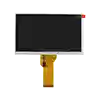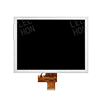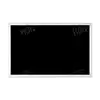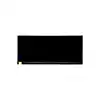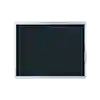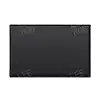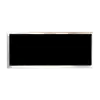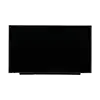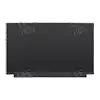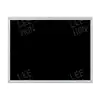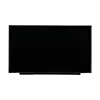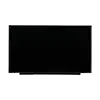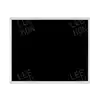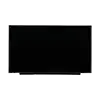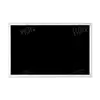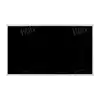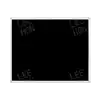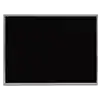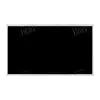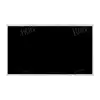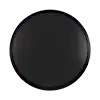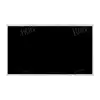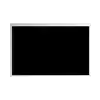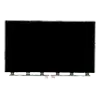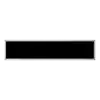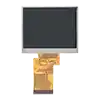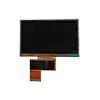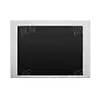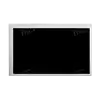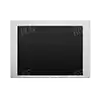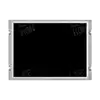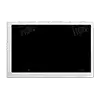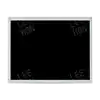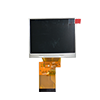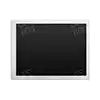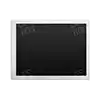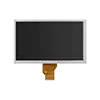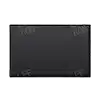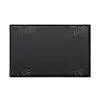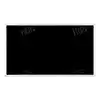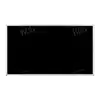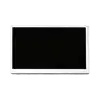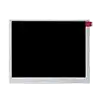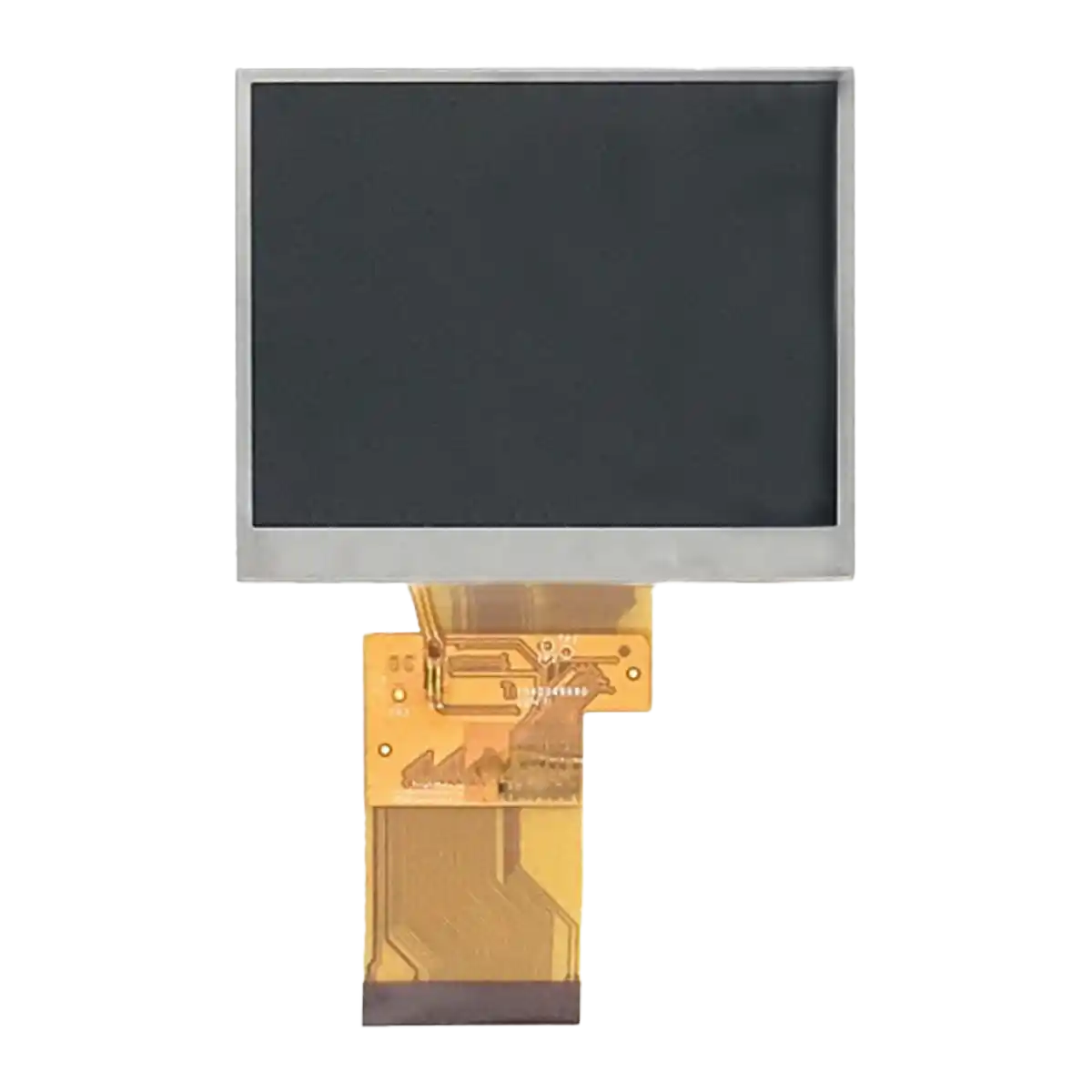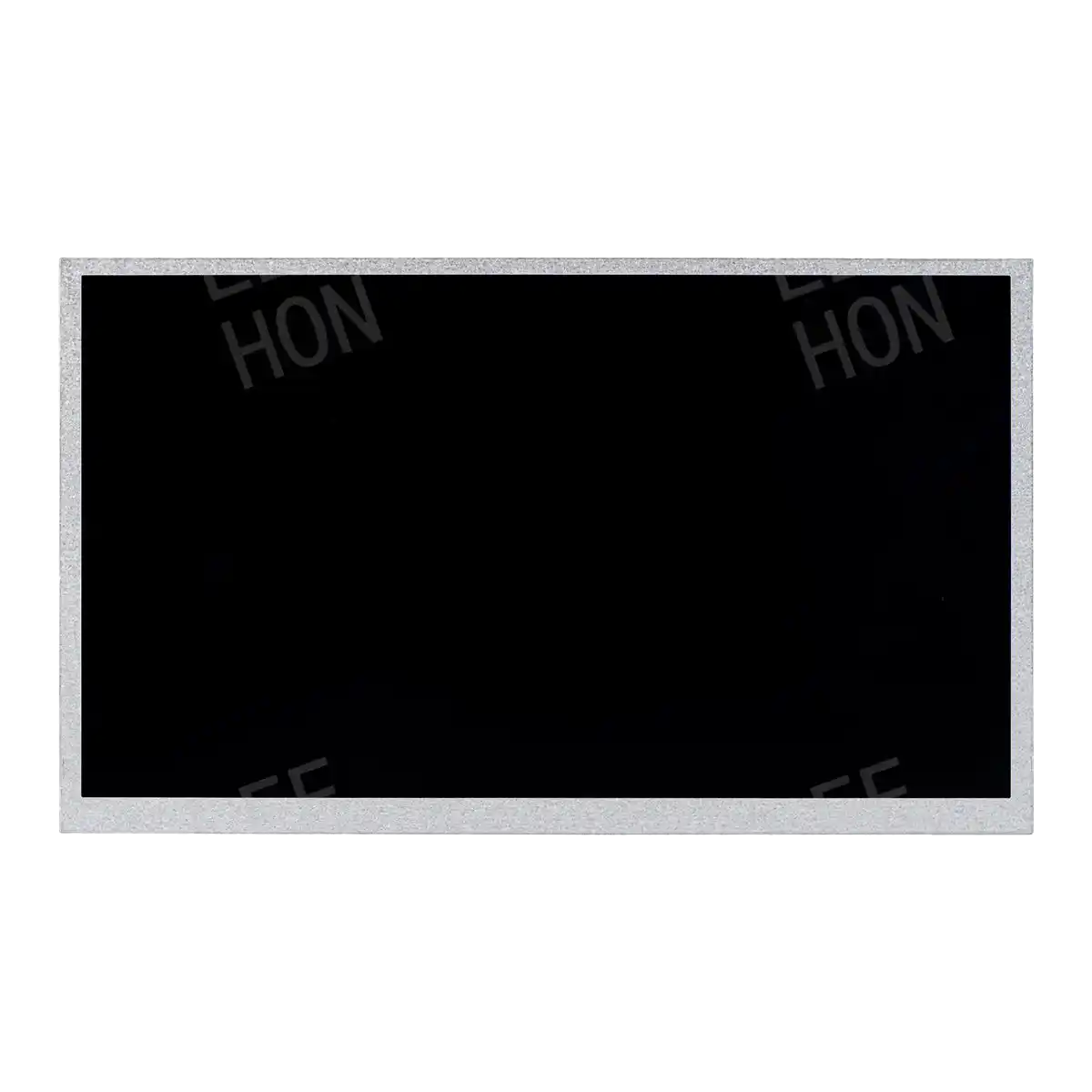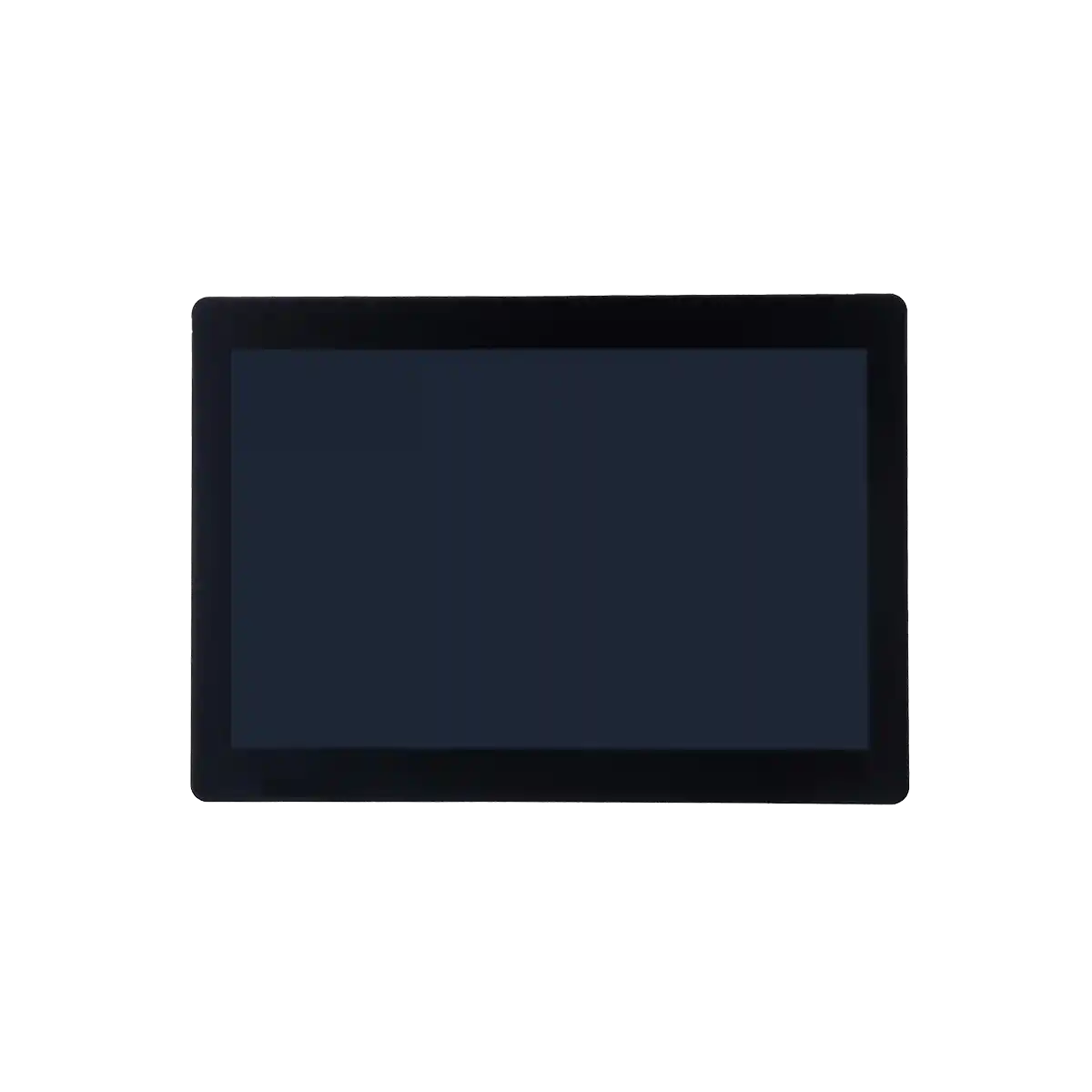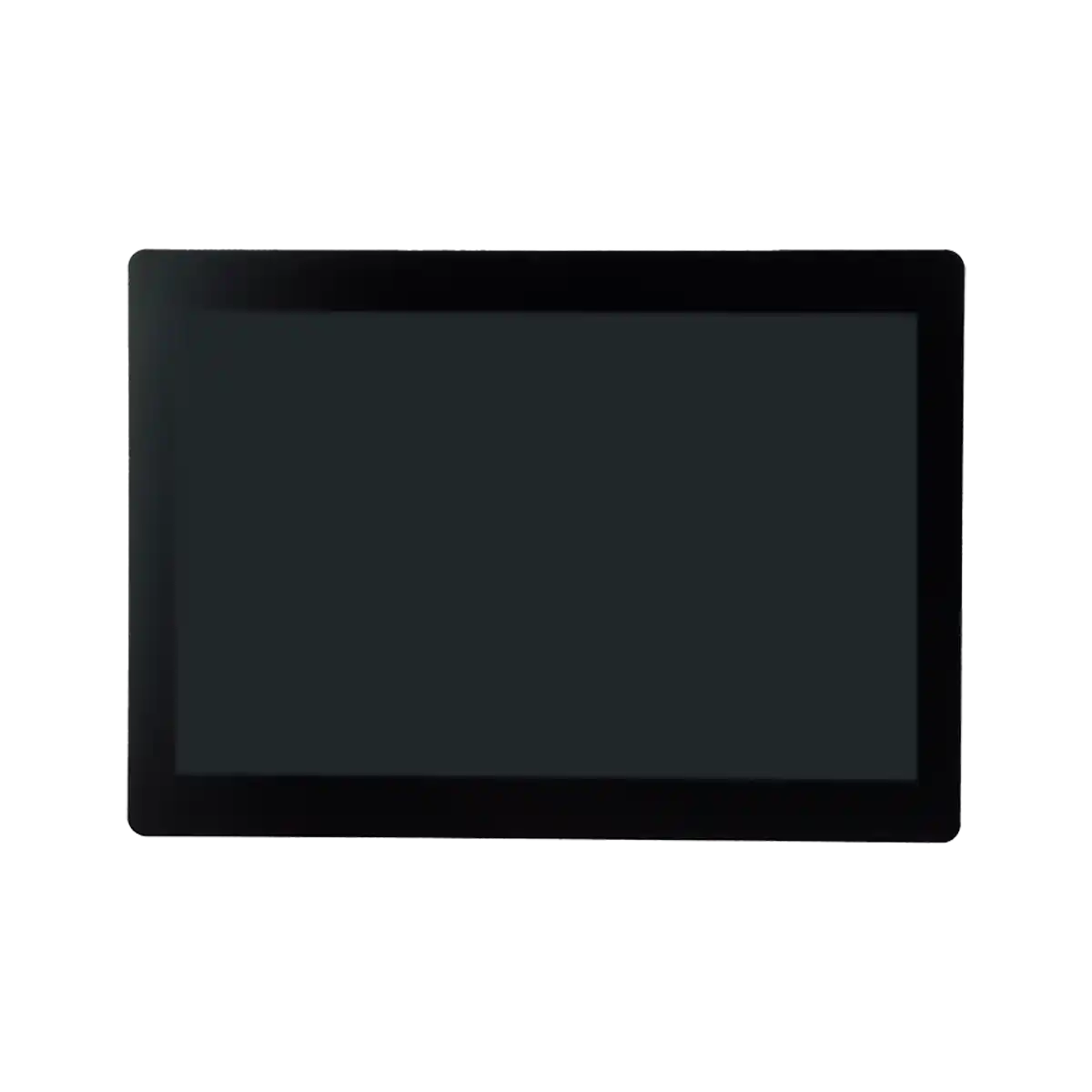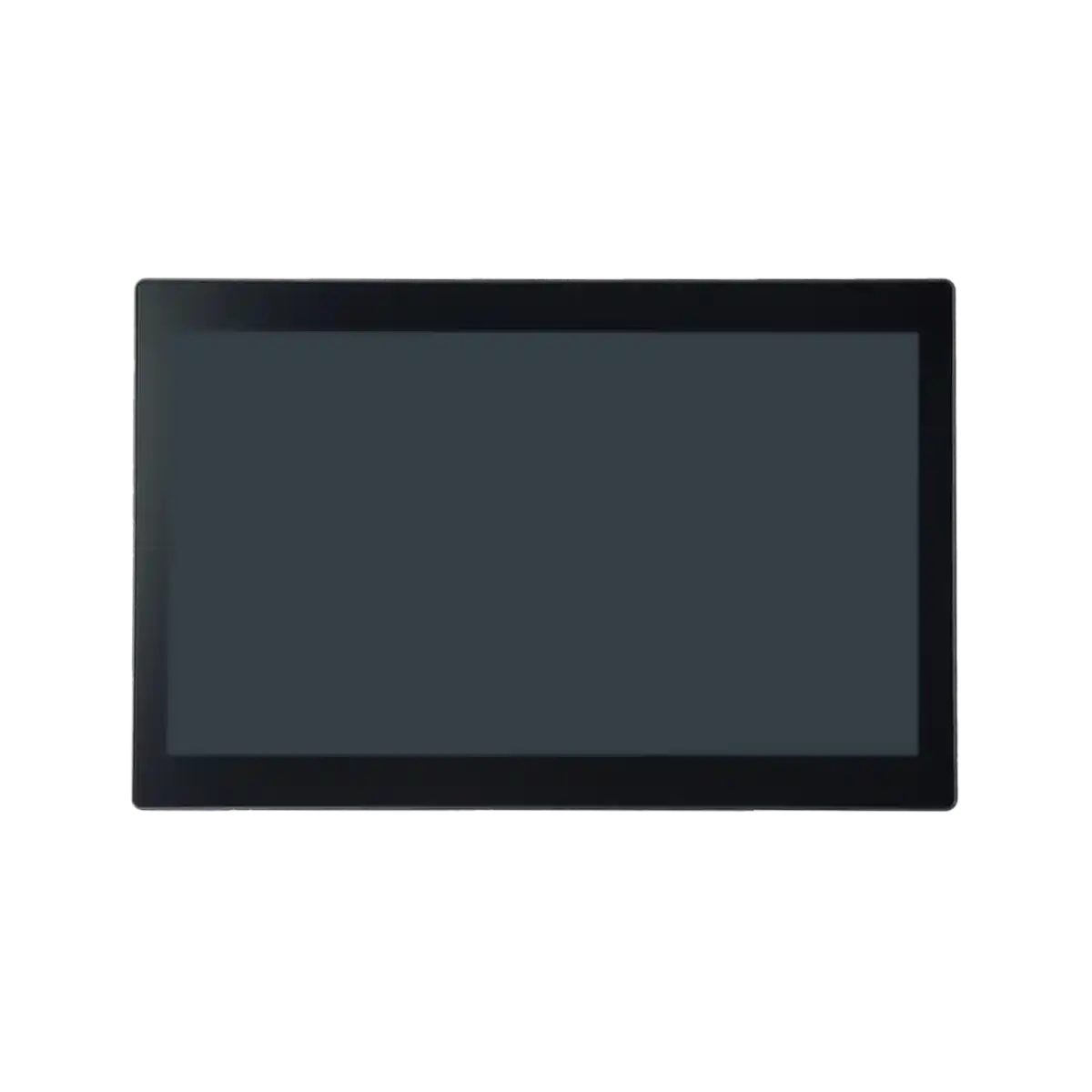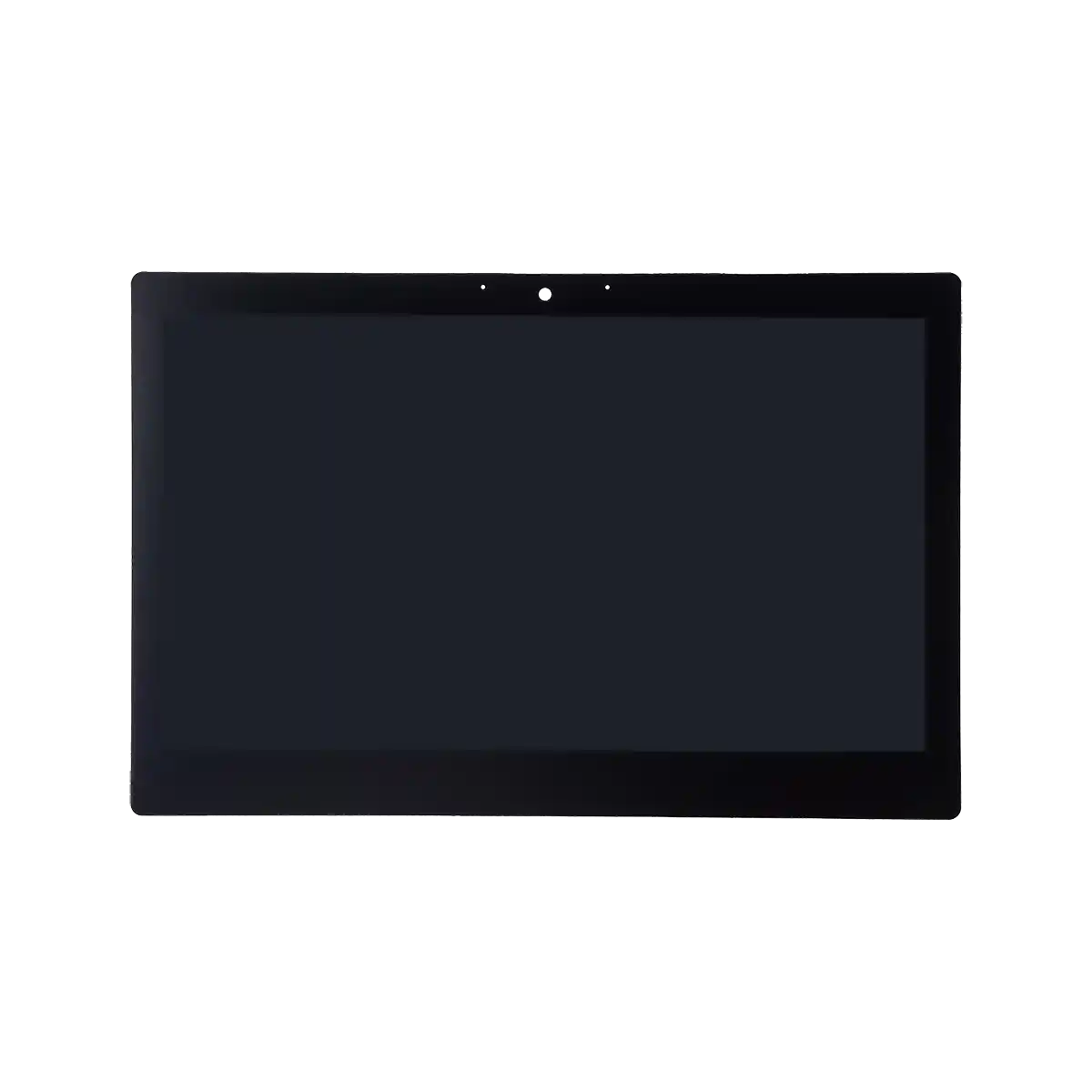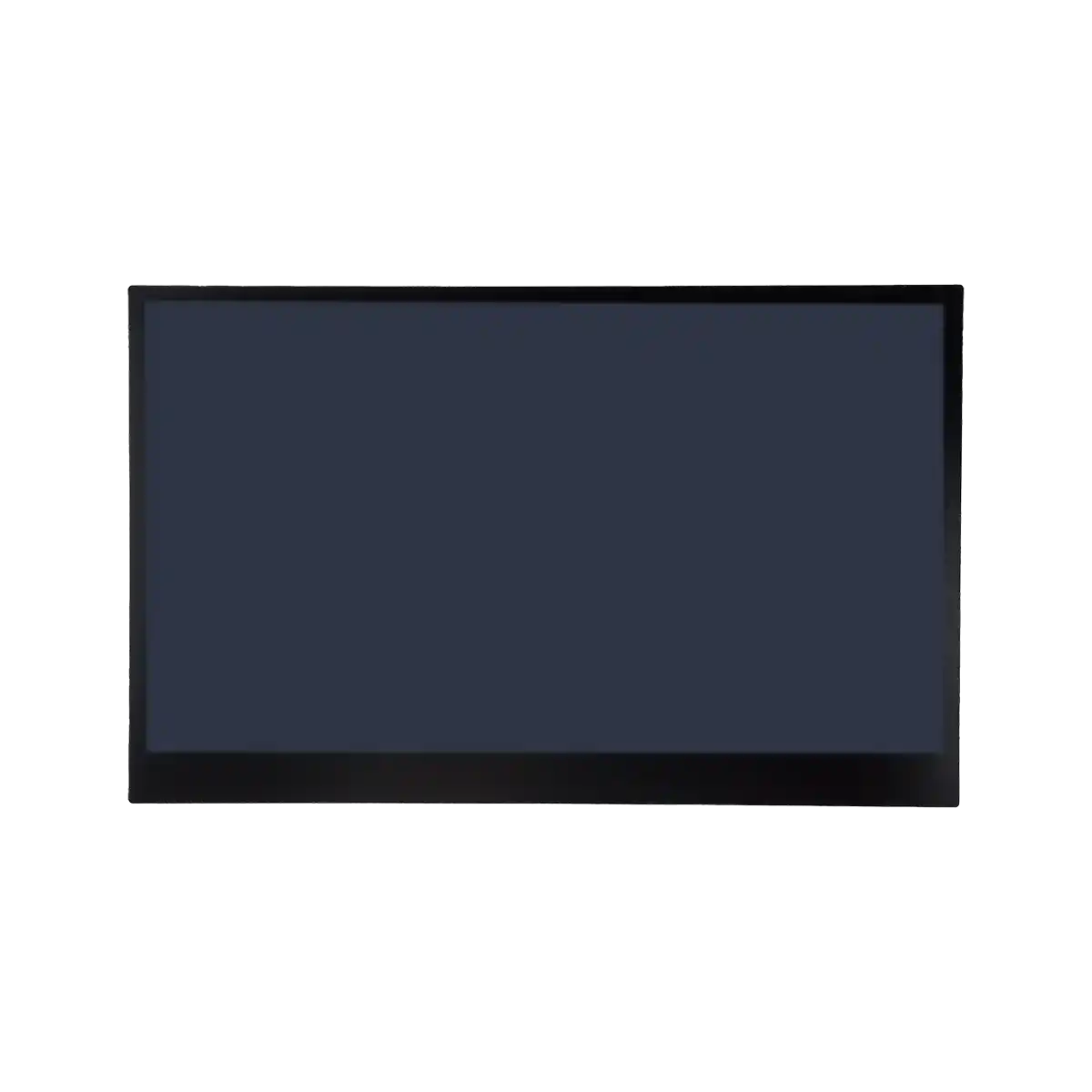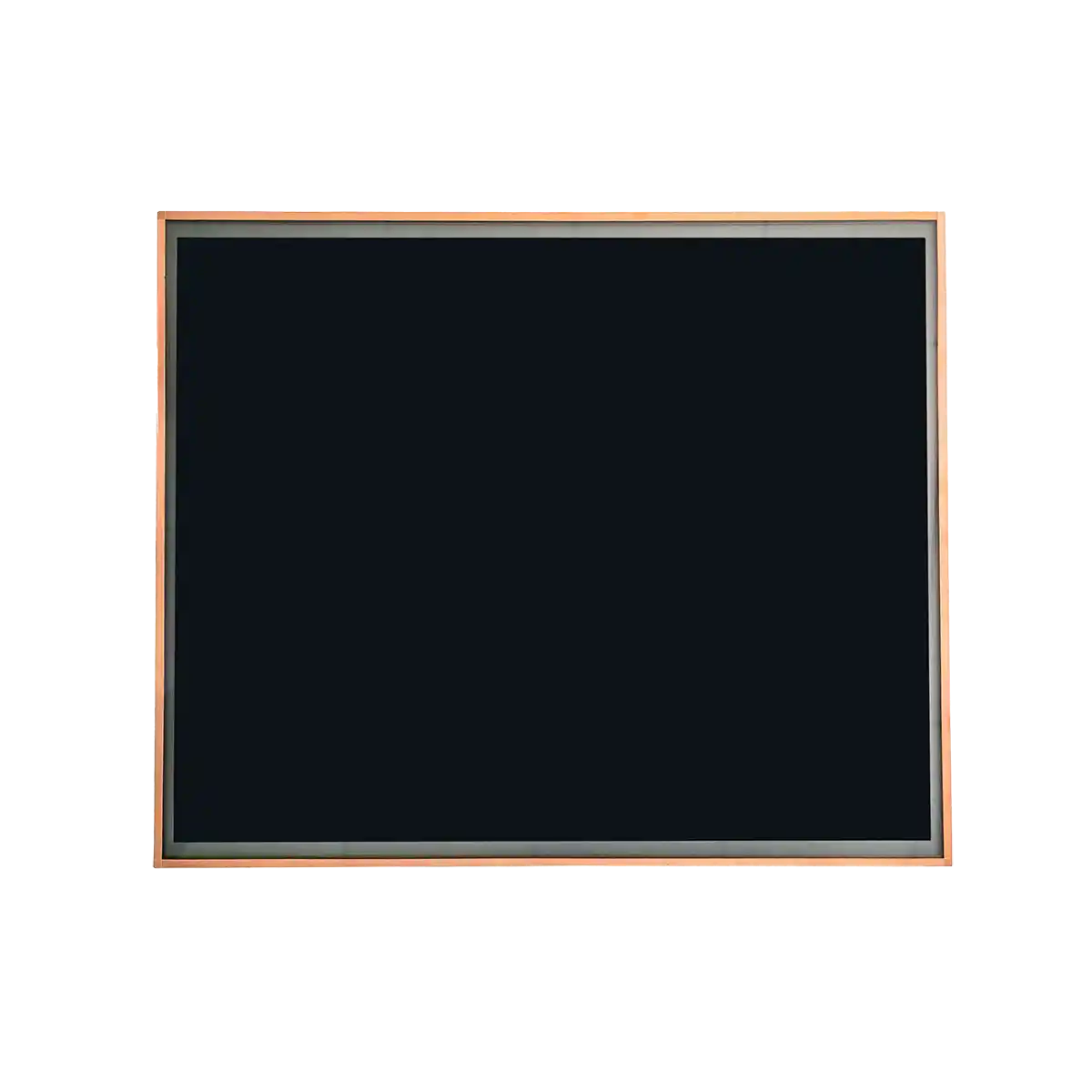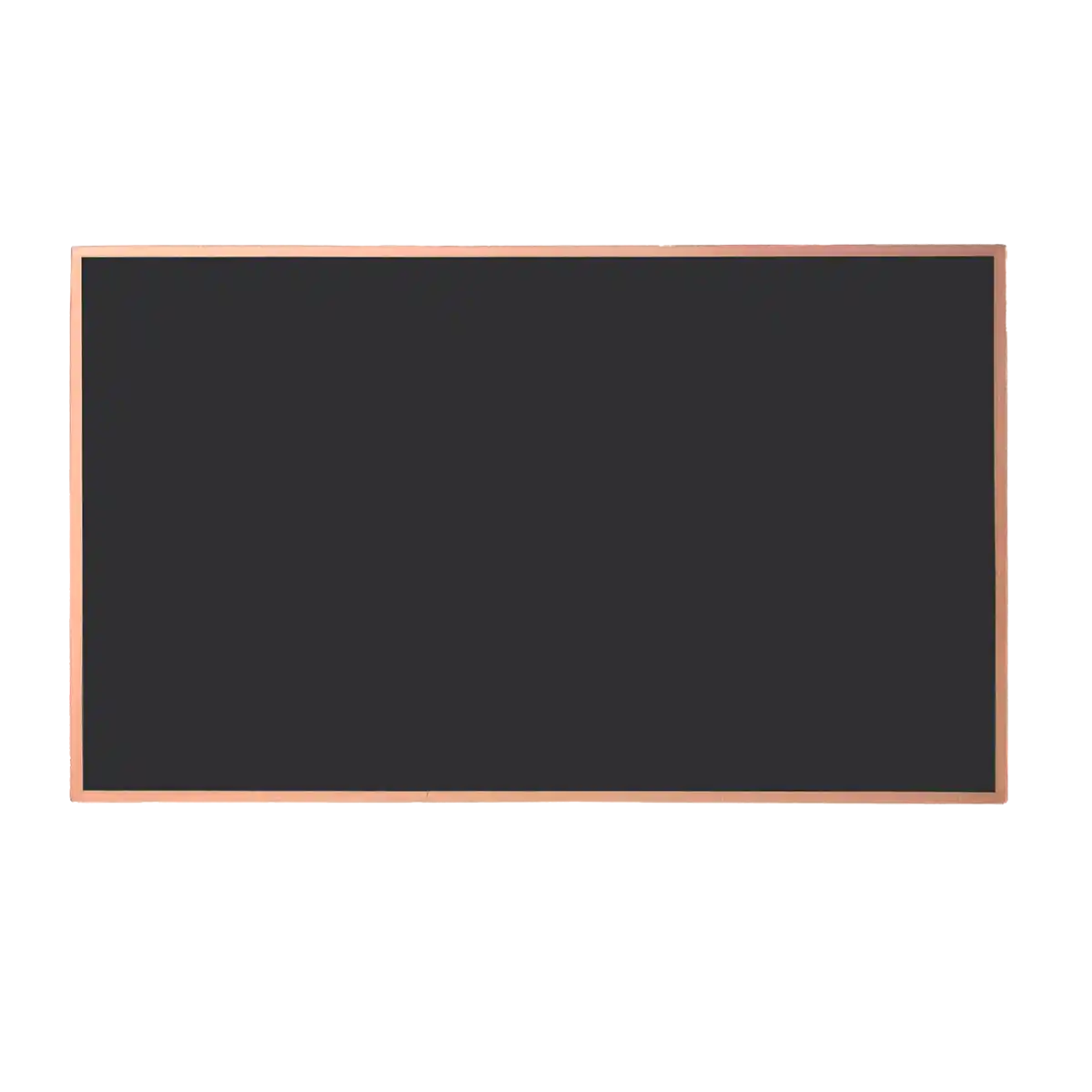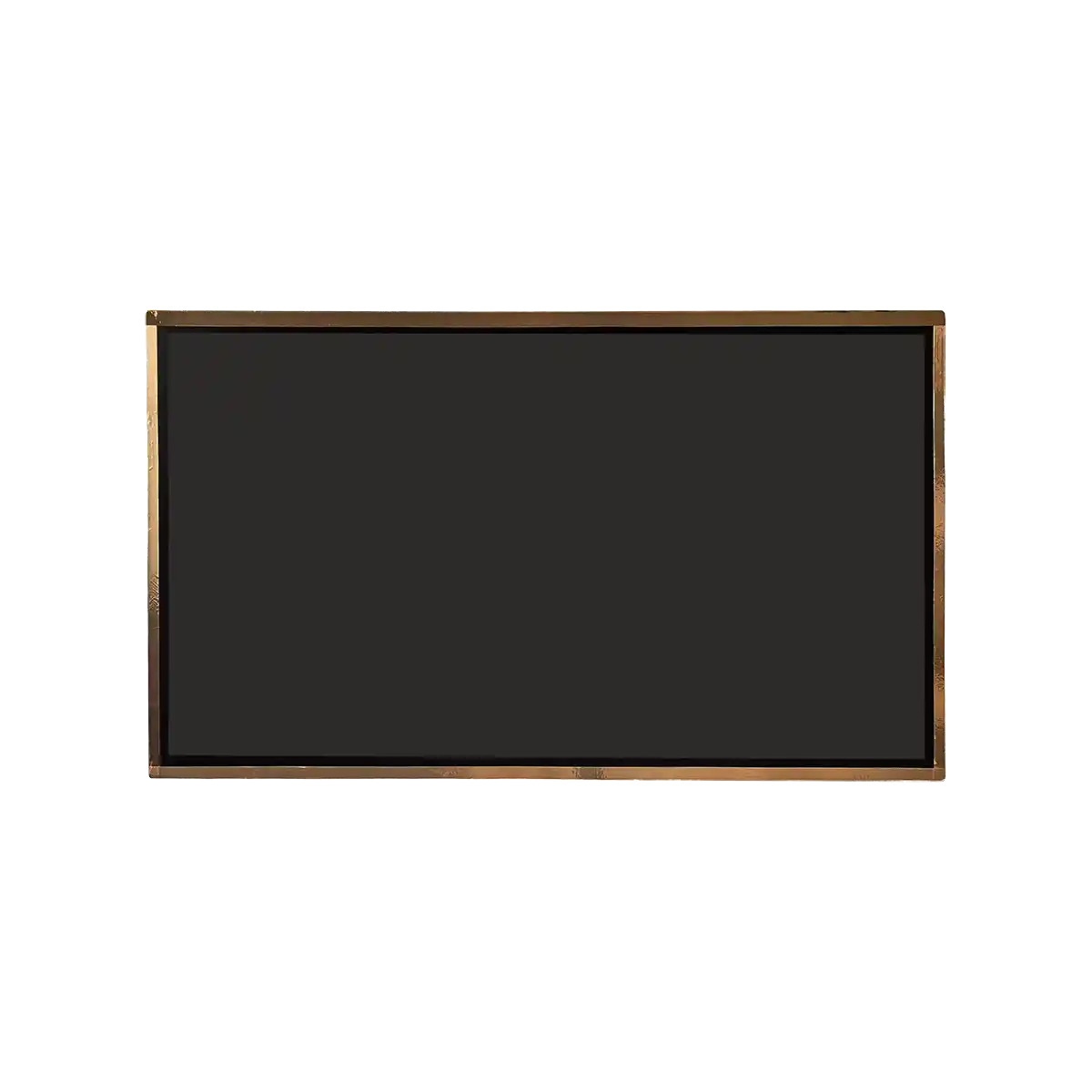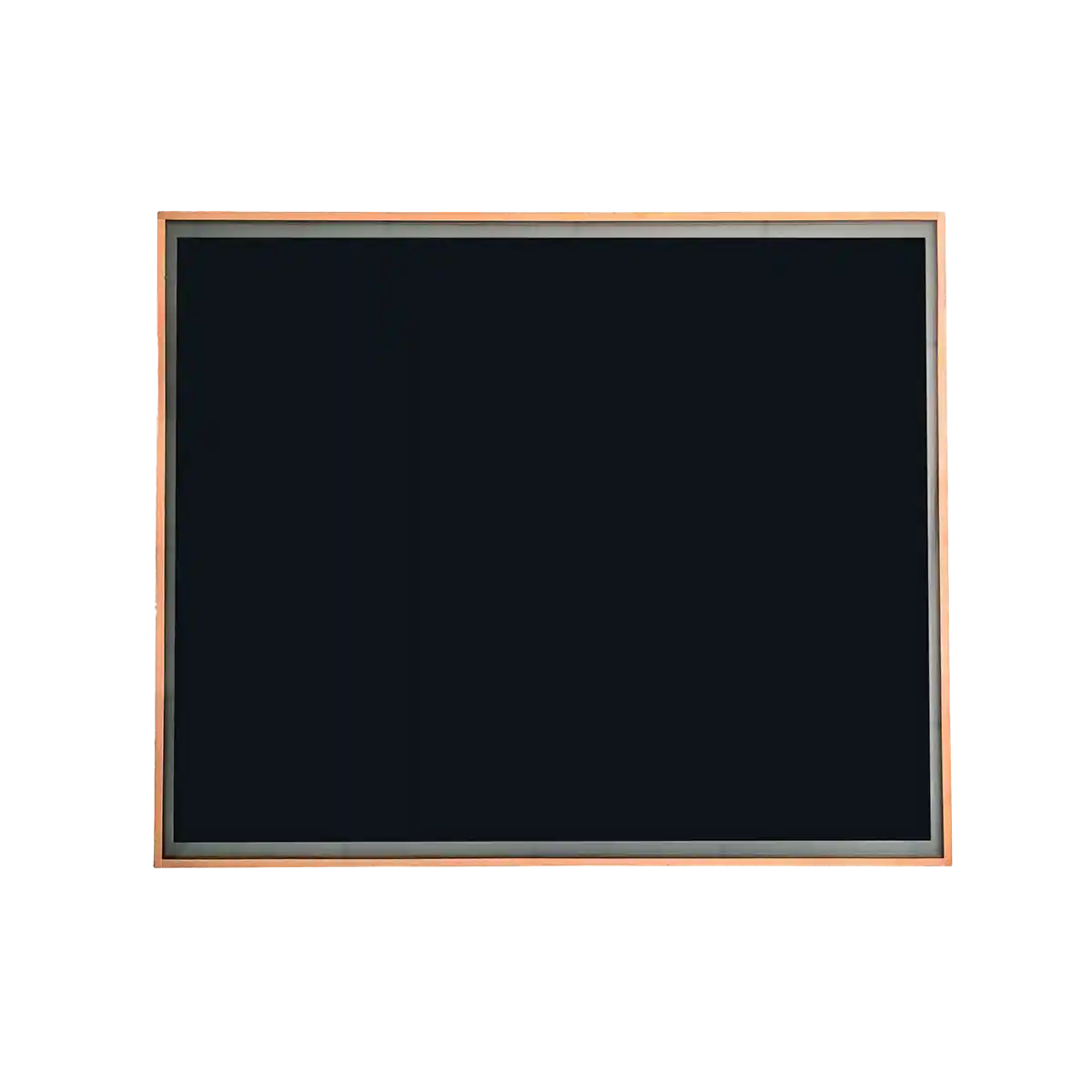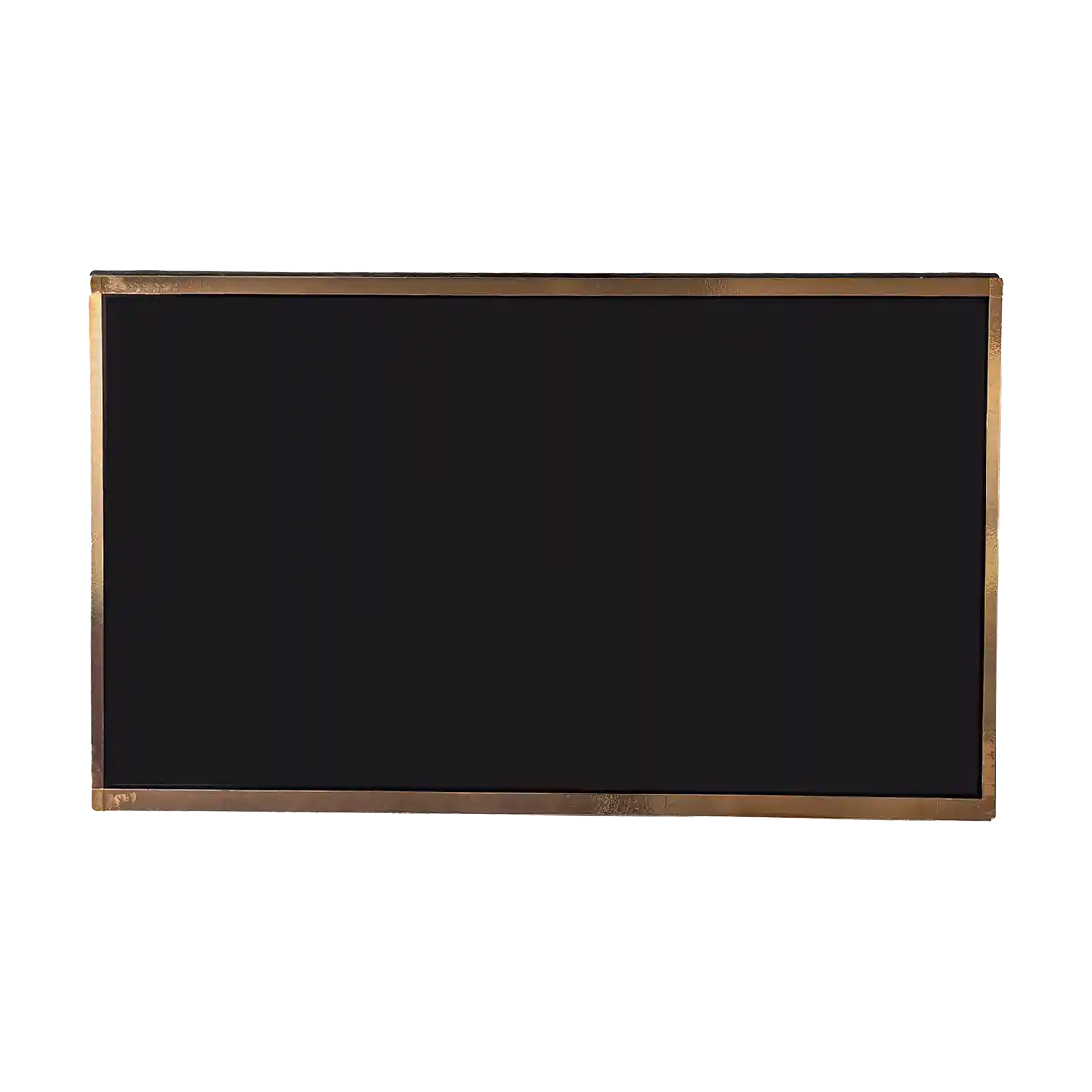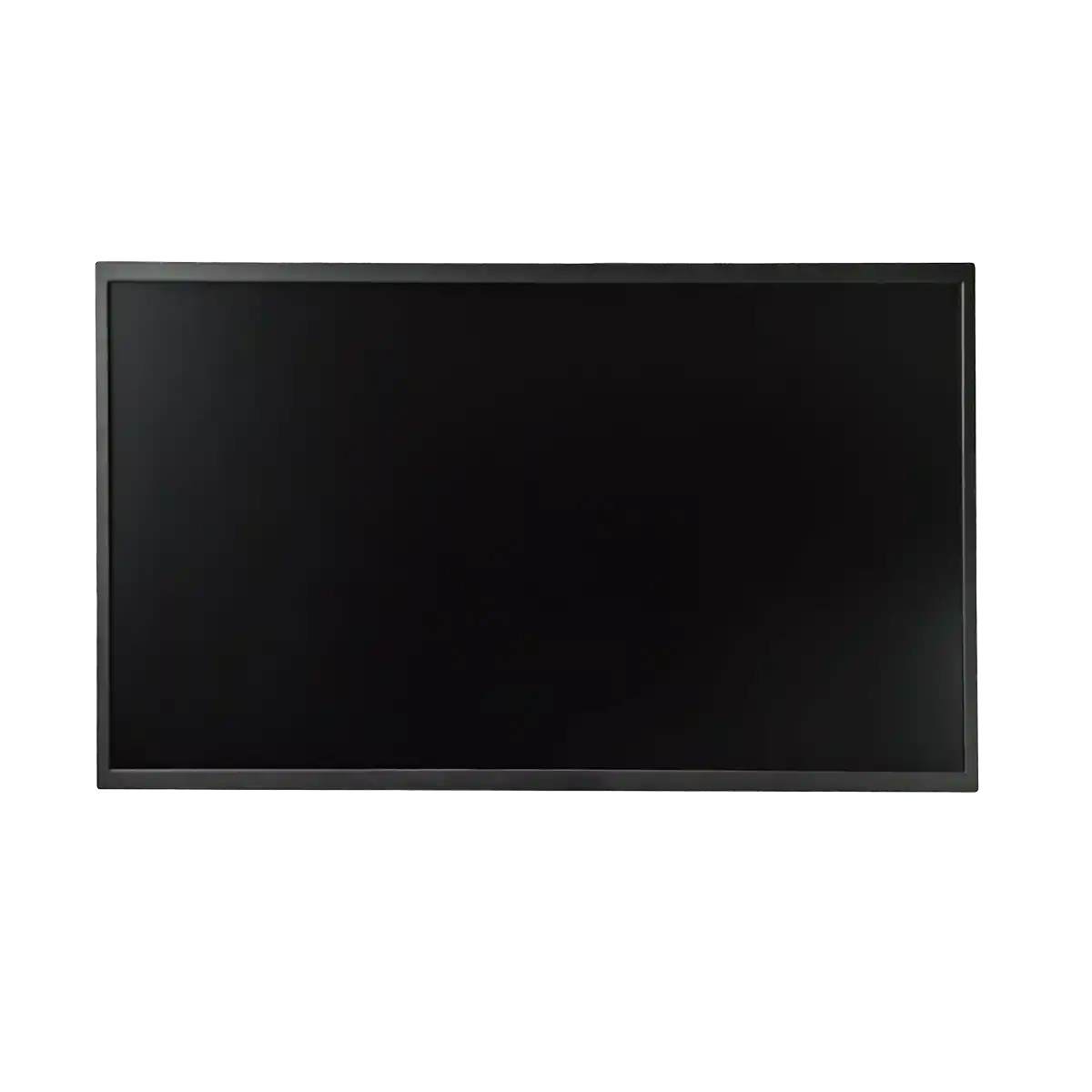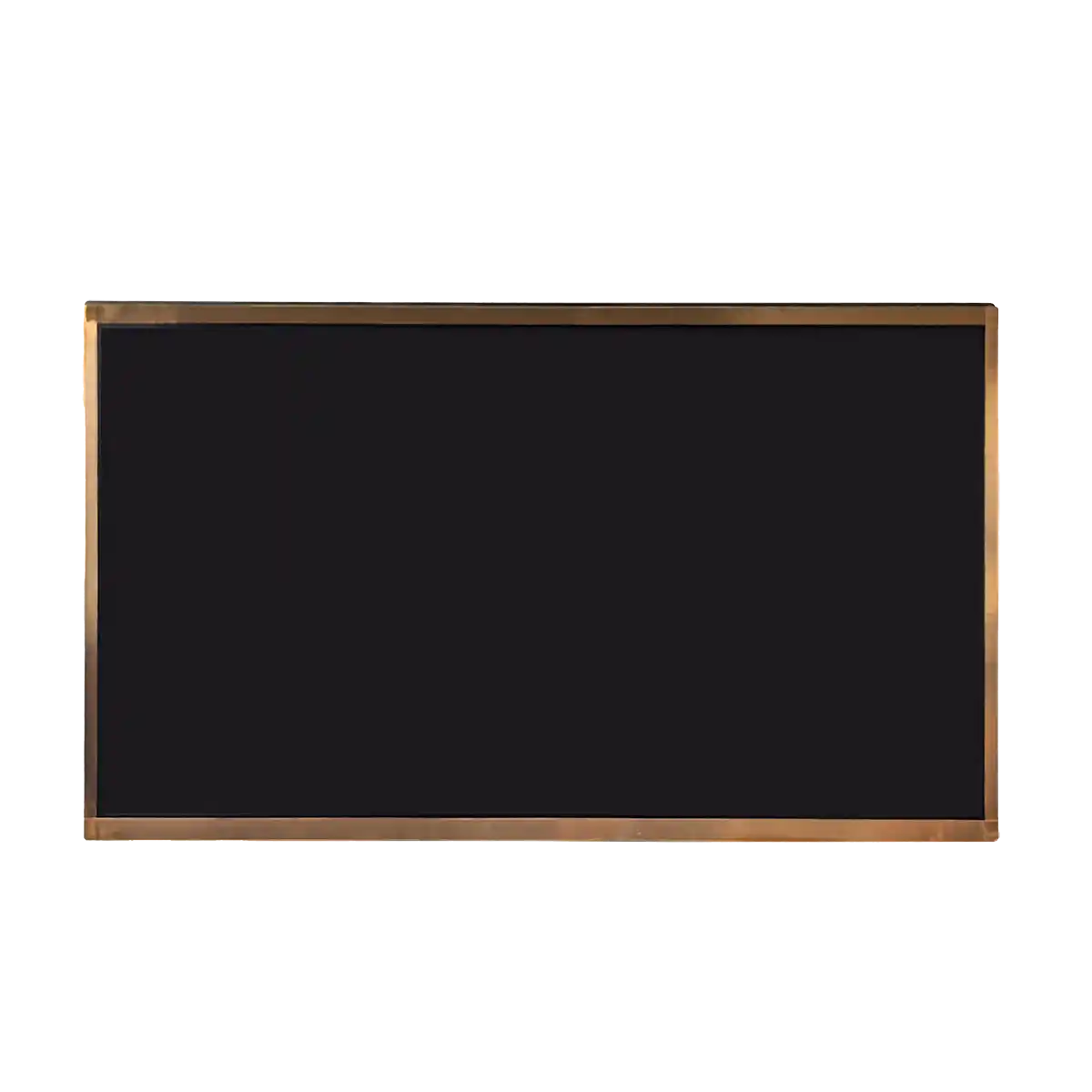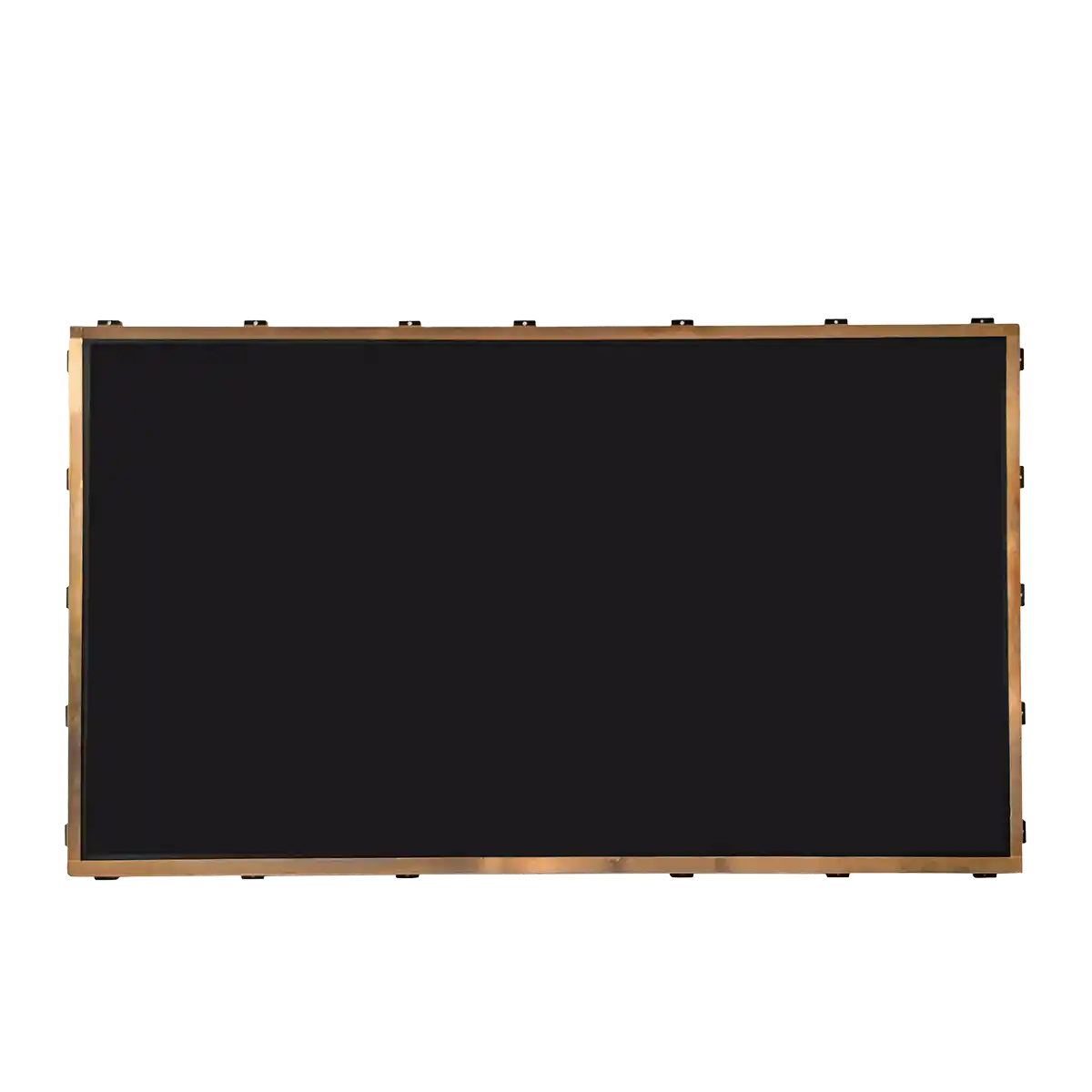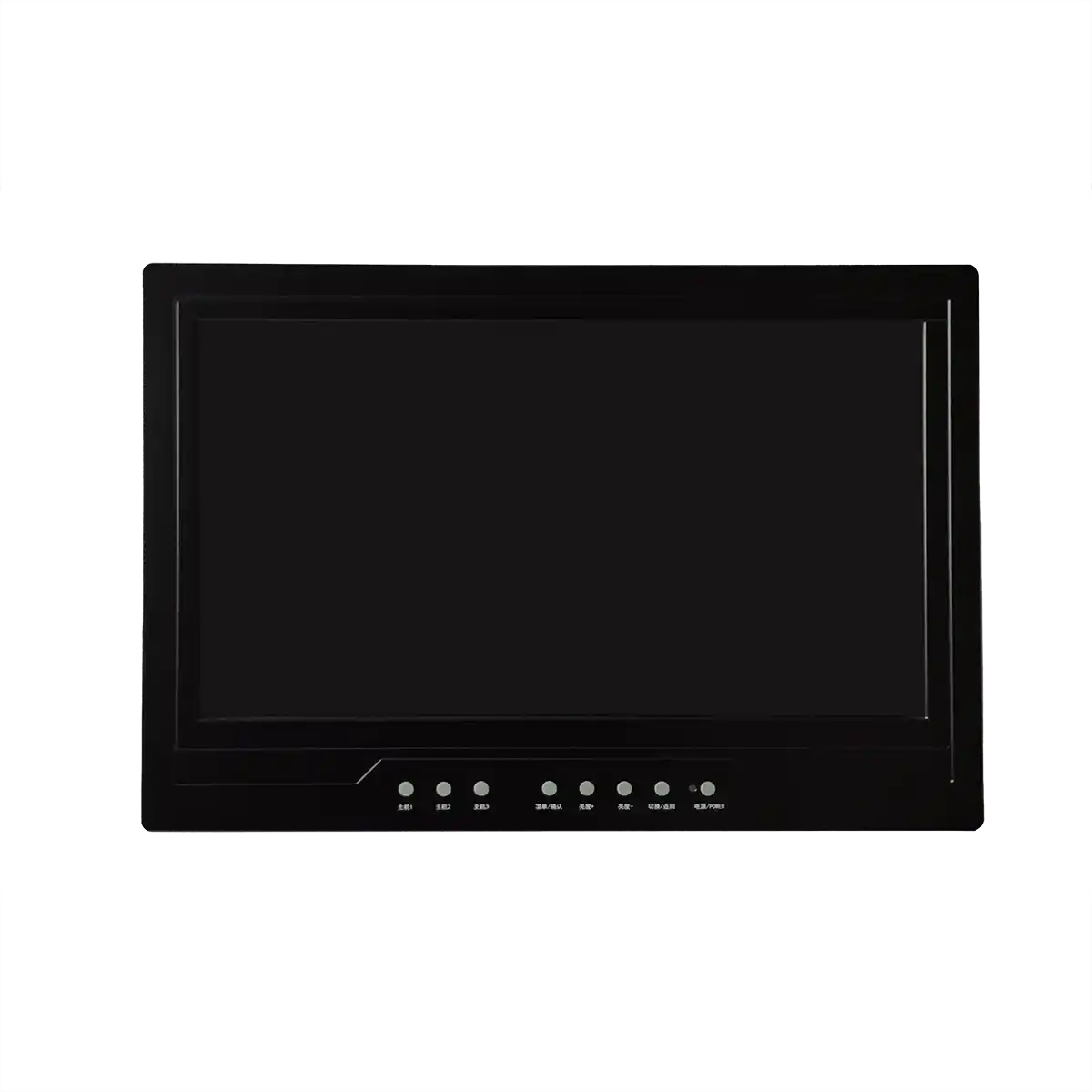Report: Handheld Drone Ground Control Station Screen Selection and Solutions – Focusing on BOE EV101WUM-N20
Company Information:
- Report Provider: Hangzhou LEEHON Technology Co.,Ltd.
- Core Business: Supplier and distributor of LCD screens from brands such as BOE, AUO, KYOCERA, INNOLUX, TIANMA, IVO, providing professional display solutions.
1. Executive Summary: Optimizing Display Screen Selection for Mission-Critical Handheld Drone Ground Control Stations
- Overview
In the field of civil aviation, the display screen of a Handheld Drone Ground Control Station (GCS) plays a crucial role. Its performance directly impacts the smooth execution of drone missions and the safe, efficient operation by the pilot. A high-performance display screen ensures that pilots can clearly obtain critical flight data, high-definition video feedback, and precisely control the drone in various complex environments, thereby guaranteeing mission success. This report aims to provide clients in the civil aviation equipment industry with a detailed and targeted selection guide for handheld GCS display screens, with a special focus on the features of the BOE EV101WUM-N20, a 10.1-inch LCD screen, and its applicability in handheld GCS applications.
Hangzhou LEEHON Technology Co.,Ltd., as a leading display solution provider in the industry, leverages its extensive experience and professional technology accumulated over years of dedication to the display sector. We are committed to providing customers with high-quality display products and comprehensive technical support. As a core partner of BOE and many other internationally renowned brands, LEEHON Technology not only ensures a stable supply of high-quality products like the EV101WUM-N20 but also offers a full range of value-added services, including optical bonding, touchscreen integration, customized cover lenses, and driver board kitting. These services help clients build high-performance, high-reliability handheld drone ground stations.
- Core Findings
Due to their portability and outdoor operational characteristics, handheld drone ground stations place stringent demands on their display screens. A comprehensive analysis reveals that the core requirements include: excellent sunlight readability to cope with bright outdoor environments; a wide operating temperature range to adapt to climate changes in different regions and seasons; high resolution to clearly present detailed map information and flight parameters; a rugged and durable structure to withstand shocks and vibrations encountered during field operations; and high cost-effectiveness while meeting the aforementioned performance criteria.
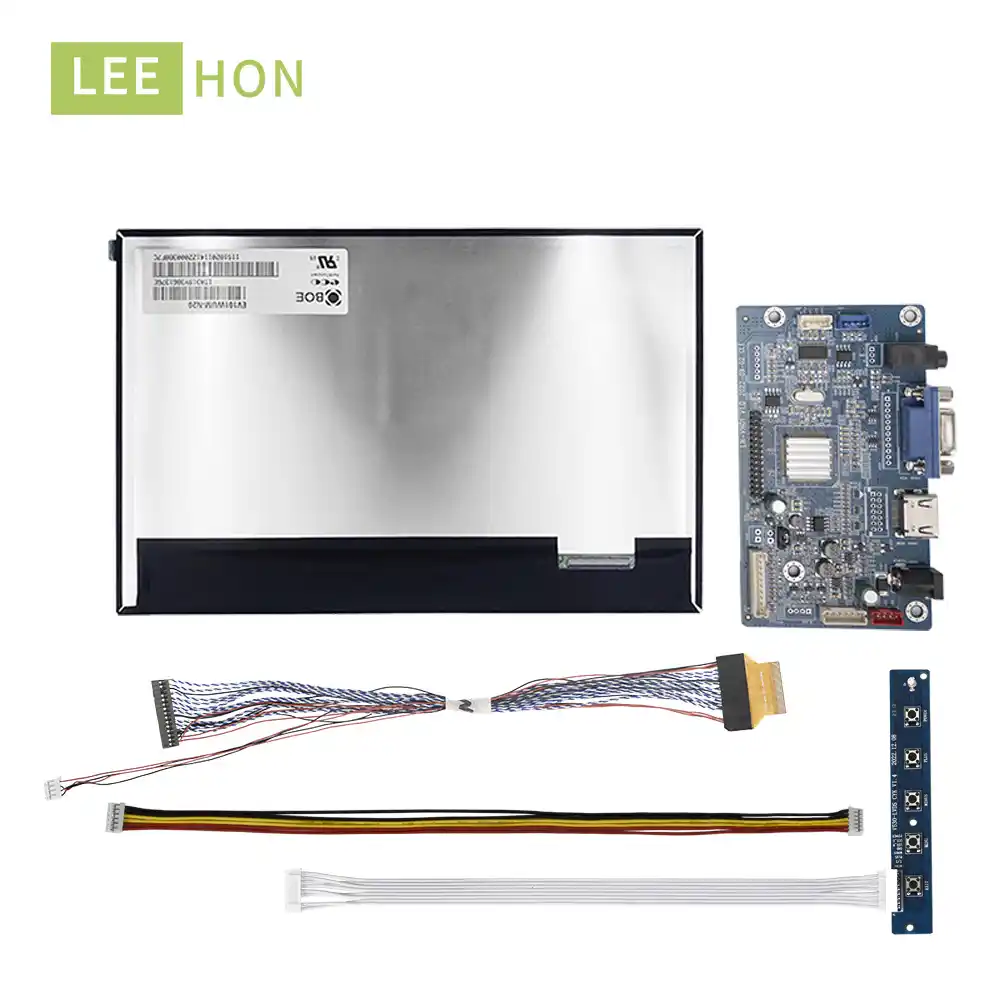
The BOE EV101WUM-N20, with its WUXGA (1920x1200) high resolution and nominal wide operating temperature range (-20°C to +70°C), demonstrates certain advantages in its basic specifications. However, to achieve optimal performance in bright sunlight and harsh environments, further technical enhancements may be necessary. Value-added services offered by LEEHON Technology, such as optical bonding and anti-glare/anti-reflective cover lenses, can significantly improve its sunlight readability and overall structural durability, thereby better meeting the practical application needs of handheld GCS. At the same time, the limitations regarding actual operating surface temperature and continuous working hours mentioned in its specifications need to be fully considered by customers at the system design level.
- LEEHON Technology's Role
Hangzhou LEEHON Technology Co.,Ltd. is dedicated to becoming the most trusted partner for customers in the display technology field. We not only provide high-quality display screen products like the BOE EV101WUM-N20 but also focus on the overall needs of our clients, offering a full-process service from product selection, technical consultation, solution customization, sample testing, to mass supply and after-sales support. Our goal is to help customers optimize the display performance of their handheld GCS, enhance product competitiveness, and ensure reliable performance in mission-critical applications. By partnering with LEEHON Technology, customers will receive professional technical guidance, reliable product supply, and flexible customized solutions, enabling them to effectively address complex and ever-changing display challenges.
2. Core Characteristics of Display Screens for Civil Aviation Handheld Drone GCS
To ensure that handheld drone ground control stations can operate reliably and efficiently in various complex environments within the civil aviation sector, their display screens must possess a series of core characteristics. These features not only affect the operator's visual experience and operational efficiency but also directly impact flight safety and mission success.
- 2.1 Sunlight Readability: The Cornerstone of Outdoor Operation
Sunlight readability is the primary performance indicator for handheld GCS display screens in outdoor applications. Operators need to clearly and accurately read critical data such as flight parameters, map information, and real-time video streams displayed on the screen under various lighting conditions, especially in direct, strong sunlight.
-
High Brightness: The brightness of a display screen, typically measured in nits (cd**/m2**), is fundamental to ensuring content visibility in bright light. Outdoor ambient light intensity is much higher than indoors, and the light emitted by the display itself must effectively penetrate environmental light interference to be clearly perceived by the operator. Industry practice and user feedback suggest that display screens for outdoor handheld devices should have a brightness of at least 700 to 1000 nits.^^ For example, some monitors designed for aerial photography, such as the DJI CrystalSky, can reach brightness levels of up to 2000 nits to ensure visibility in direct sunlight.^^ However, high brightness often comes with higher power consumption, which is a factor to consider for battery-powered handheld devices. Therefore, while pursuing high brightness, attention must also be paid to the display's energy efficiency.** **
-
High Contrast Ratio: Contrast ratio refers to the difference in brightness between the brightest white and the darkest black on the screen. A high contrast ratio makes images more layered, details more prominent, and text sharper, thereby enhancing image clarity and recognizability, especially in environments with complex and variable lighting conditions.^^ Even with sufficient brightness, if the contrast ratio is inadequate, screen content may appear blurry.** **
-
Glare Management: Untreated display surfaces are prone to specular reflections and glare under sunlight, which not only severely interferes with the operator's ability to read screen information but also causes visual fatigue and can even lead to operational errors.^^ Effective glare management is crucial for improving outdoor readability. Common techniques include:** **
- AG (Anti-Glare) Coating: By creating a slightly rough texture on the screen surface, concentrated specular reflections are scattered, reducing harsh glare, though this may slightly sacrifice image sharpness.
- AR (Anti-Reflective) Coating: Using multi-layer optical thin film interference principles, this coating minimizes light reflection on the screen surface, thereby increasing transmittance, making screen content clearer and colors more true-to-life.^^
-
Optical Bonding: A Key Technology for Enhancing Clarity and Durability Optical bonding is a process that uses optical-grade transparent adhesives (such as OCA optical adhesive or OCR optical resin) to fully bond the display panel (LCD/OLED), touchscreen, and/or protective cover lens, eliminating air gaps between layers.^^ This technology offers significant advantages for improving the comprehensive performance of handheld GCS display screens:** **
- Improved Sunlight Readability: The presence of air gaps causes light to undergo multiple reflections and refractions at different media interfaces (air-glass, air-LCD), reducing contrast and transmittance, and creating a "mirror effect." Optical bonding, by filling these gaps with an optical adhesive whose refractive index is close to that of glass, significantly reduces internal light reflection, improves contrast and effective brightness, thereby greatly enhancing the display's readability in sunlight.^^
- Enhanced Structural Strength and Durability: The filling optical adhesive tightly binds the layers into a solid unit, effectively improving the display module's resistance to impact and vibration, making it better able to withstand accidental drops or collisions that may occur during field use of handheld devices.^^
- Prevention of Dust and Moisture Ingress: Eliminating air gaps also prevents dust, moisture, and other contaminants from entering the display screen, avoiding internal fogging due to temperature changes and ensuring the long-term reliability of the display in various harsh environments.^^
- Improved Touch Experience: For GCS equipped with touchscreens, optical bonding can reduce the parallax between the touch layer and the displayed image, making touch positioning more accurate and the operating feel more direct and natural.^^
Figure 1: Diagram of Optical Bonding Structure and Advantages*(Conceptual diagram: On the left, a traditional air-gap bonding structure, showing light reflecting multiple times at the air layer, glass, and LCD surfaces, resulting in a blurry image and reduced contrast. On the right, an optical bonding structure, showing optical adhesive filling the air gap, allowing light to pass through directly with reduced reflection, resulting in a clear image and high contrast. The right side structure can also be labeled with "Enhanced Durability.")*
This diagram clearly illustrates how optical bonding technology optimizes the light path and reduces internal reflections by eliminating the air layer, thereby significantly improving the display's visual performance and structural strength outdoors. For handheld GCS pursuing ultimate performance, optical bonding is a key technology for achieving excellent sunlight readability and high reliability. -
2.2 Performance in Extreme Temperatures: Ensuring All-Weather Reliable Operation
Civil aviation handheld GCS may be deployed in different climate zones globally, facing extreme temperature challenges from scorching heat to severe cold. As a critical component directly exposed to the external environment, the display screen's ability to operate stably over a wide temperature range is paramount. Typically, industrial-grade display screens need to have a wide operating temperature range, such as -20°C to +70°C, or even wider, to ensure normal operation under various climatic conditions.^^ Simultaneously, a wide storage temperature range (e.g., -25°C to +80°C) is equally important, ensuring the device's weather resistance and reliability during non-operational states (such as transportation and storage).^^
The physical properties of liquid crystal materials are sensitive to temperature. In low-temperature environments, the response speed of liquid crystal molecules slows down, leading to image smearing and ghosting on the display; in high-temperature environments, liquid crystal materials may exceed their phase transition point, causing the screen to blacken, display abnormally, or even suffer permanent damage. Wide-temperature liquid crystal technology extends the normal operating temperature range of the display by using special liquid crystal materials, optimized driving methods, and precise structural designs, ensuring its display performance and reliability under extreme temperatures.
However, it is crucial to note that the wide operating temperature range stated in some display specifications may come with certain limiting conditions. For example, some specifications might stipulate that even when operating within the nominal wide ambient temperature range, the surface temperature of the display itself (LCM Surface Temperature) must not exceed a specific value (e.g., 40°C), and there might be restrictions on daily continuous operating hours and single continuous use duration.^^ This means that GCS system integrators, when designing their products, must fully consider the heat generated by the display itself and heat accumulation from external sources (like direct sunlight), and implement effective thermal management measures (such as passive cooling structures, active cooling fans) to ensure the display's actual operating temperature remains within its permissible range. This prevents performance degradation or shortened lifespan due to overheating. This aspect is critical for ensuring the all-weather reliable operation of handheld GCS in real outdoor environments.** **
- 2.3 Visual Precision: Clearly Presenting Critical Data
Handheld GCS display screens need to carry a large amount of fine visual information, including high-resolution maps, real-time HD drone video streams, complex flight instrument parameters, route planning interfaces, etc. Therefore, the visual precision of the display screen directly affects the operator's efficiency in acquiring information and the accuracy of decision-making.
High resolution is the foundation for achieving visual precision. For handheld device screens around 10.1 inches, WUXGA (1920x1200 pixels) or higher resolution can provide a sufficient number of pixels to ensure the clarity and fineness of images and text.^^ Pixel density (PPI, Pixels Per Inch) is an intuitive indicator of screen fineness; a higher PPI means more pixels per unit area, smoother image edges, and richer details.^^ For example, the BOE EV101WUM-N20 achieves WUXGA resolution on a 10.1-inch screen, with a PPI of up to 224, capable of clearly displaying complex graphics and small text.** **
In addition to resolution, wide viewing angle technology is also important for handheld GCS. When an operator uses a handheld device, their viewing angle may change at any time. Display screens using ADS (Advanced Super Dimension Switch, a wide viewing angle technology similar to IPS) or IPS (In-Plane Switching) technology can provide a wider effective viewing angle (e.g., over 160 degrees horizontally and vertically, typically judged by CR≥10), ensuring that the operator can obtain color-accurate and brightness-consistent images from different angles, avoiding color distortion or brightness attenuation due to viewing angle deviations.^^ This is particularly critical for scenarios requiring multi-person collaboration or use while in motion. Higher resolution and wider viewing angles together form the core of GCS display screen visual precision, enabling operators to grasp drone status and environmental information more easily and accurately, reducing risks associated with information misinterpretation.** **
- 2.4 Durability for Field Environments: Robustness and Reliability are Prerequisites
As devices used in various outdoor field environments, handheld drone ground stations require their display screens to possess sufficient durability to cope with potential physical challenges and environmental stresses. These challenges include accidental drops, impacts, continuous vibrations, and the ingress of dust and moisture.
Industrial-grade display screens are typically reinforced in structural design and material selection to enhance their robustness and reliability. For example, they might use more robust metal casings or reinforced plastic frames, with internal key components cushioned and secured. For handheld devices, the IP (Ingress Protection) rating is an important standard for measuring their dustproof and waterproof capabilities. For instance, an IP65 rating indicates that the device can completely prevent dust ingress and withstand low-pressure water jets from any direction, which is crucial for operation in rainy or dusty environments.^^
MIL-STD-810G/H is a series of environmental engineering considerations and laboratory test standards developed by the U.S. Department of Defense to evaluate the performance and durability of equipment under simulated harsh service environmental conditions.^^ These tests include high and low-temperature cycling, humidity, salt spray, sand and dust, vibration, and shock (such as drops). Although MIL-STD itself is not a certification, displays or devices that comply with its relevant test methods are generally considered to have higher environmental adaptability and reliability, making them more suitable for use in harsh field conditions.^^
Furthermore, the material of the display screen's protective cover lens also significantly impacts durability. Using chemically strengthened glass (such as Corning Gorilla Glass or similar technologies) as the cover lens can significantly improve the screen's scratch resistance and impact strength, effectively preventing screen damage from accidental contact or drops. Optical bonding technology, in addition to enhancing display effects, also provides a cushioning effect through its filled optical adhesive layer, further enhancing the display module's impact resistance.^^ In GCS system design, rational structural design, such as using shock-absorbing gaskets or suspended mounting, can also effectively protect the display screen from external shocks and vibrations.^^
- 2.5 Power Management: Optimizing the Battery Life of Handheld Devices
Handheld drone ground stations rely on built-in batteries for power, and their battery life directly affects the execution time of a single mission and the continuity of operation. For example, some GCS equipped with a 10.1-inch screen and a built-in battery (e.g., 10200mAh) may offer about 3 hours of battery life.^^ The display screen, as one of the main power-consuming components of the GCS (other major power consumers include the processor, wireless communication modules, etc.), its power efficiency is crucial for extending the overall device battery life.** **
The power consumption of a display screen mainly comes from two aspects: the power consumption of the LCD panel's driving circuit itself and the power consumption of the LED backlight system. For a 10.1-inch WUXGA display screen like the BOE EV101WUM-N20, its panel typical power consumption is about 0.7W, while the backlight power consumption is closely related to the brightness setting. At 600 nits brightness, the backlight power consumption might be around 3.5W, making the total typical power consumption of the display module about 4.27W.^^ Therefore, selecting high-efficiency LED backlight driver chips and low-power panel designs is key to reducing the overall power consumption of the display screen.** **
In addition, some advanced power management technologies can also help optimize battery life. For example, GCS equipped with an Ambient Light Sensor (ALS) can automatically adjust screen brightness according to the intensity of surrounding ambient light.^^ Appropriately reducing screen brightness in darker environments not only provides a more comfortable visual experience but also significantly saves power, thereby effectively extending battery usage time. Fine-tuning the power management of the display screen and its driving circuits in the GCS system design is an indispensable part of achieving long battery life.** **
- 2.6 User Interaction: Efficient and Intuitive Touch Experience
Modern handheld drone ground stations increasingly favor touchscreens as the primary interaction method to achieve more intuitive and convenient operation. Touchscreen technology allows operators to directly interact with the graphical user interface (GUI) on the screen through gestures like tapping, swiping, and pinching, enabling rapid completion of tasks such as route planning, parameter setting, and gimbal control.
Currently, the mainstream touchscreen technologies are PCAP (Projected Capacitive) and RTP (Resistive Touch Panel).^^
- PCAP Projected Capacitive Touchscreen: Supports multi-touch, is responsive, has high light transmittance, high surface hardness, is wear-resistant, and has a modern appearance, making it the mainstream choice for smartphones and tablets. Its disadvantages are relatively higher cost and potential performance degradation when wearing thick gloves or when the screen surface has a lot of water, unless specially designed controllers and sensors are used.
- RTP Resistive Touchscreen: Achieves touch through pressure sensing, can be operated with fingers, fingernails, styluses, or even while wearing gloves. It has strong adaptability to working environments and a relatively lower cost. Its disadvantages include slightly lower light transmittance, no multi-touch support, an easily scratched surface, and potential linearity degradation after long-term use.
For handheld GCS, the choice of touchscreen technology needs to comprehensively consider the operating environment, operating habits, cost budget, and the need for multi-touch functionality. For example, if operators frequently need to wear gloves, or if the device might be used in the rain, then optimized PCAP or traditional RTP might be more suitable choices.
The integration method of the touchscreen and display screen also affects the user experience. Optical bonding technology again demonstrates its advantages in this aspect. By eliminating the air gap between the touch layer and the displayed image, it can significantly reduce parallax, making the touch point highly consistent with the visual feedback point, thereby improving touch accuracy and response speed, and bringing a smoother, more intuitive interaction experience.^^ LEEHON Technology can provide selection, customization, and integration services for PCAP or RTP touchscreens according to specific customer needs, and combined with optical bonding processes, create high-performance touch display modules.** **
3. Focus Solution: In-depth Analysis of BOE EV101WUM-N20 Display Screen
- Introduction
BOE Technology Group Co., Ltd. (BOE) is a global leader in IoT innovation, with its display business holding a leading position worldwide in the semiconductor display field. Its products are widely used in smartphones, tablets, laptops, monitors, TVs, as well as professional display areas such as industrial, medical, automotive, and aviation. BOE has earned widespread trust from global customers with its strong R&D capabilities, advanced manufacturing processes, and strict quality control systems.
Hangzhou LEEHON Technology Co.,Ltd., as a core distributor and important partner of BOE, has established a long-term and stable cooperative relationship with BOE. We can not only provide customers with a stable supply of BOE's full range of display products but also, relying on our own technical strength and deep understanding of BOE products, offer comprehensive technical support, application solution consulting, and customized value-added services. This ensures that customers can fully leverage the performance advantages of BOE display products and smoothly complete their project development.
- 3.1 BOE EV101WUM-N20 Comprehensive Technical Specifications
The BOE EV101WUM-N20 is a 10.1-inch a-Si TFT-LCD liquid crystal module designed for industrial applications and those requiring high-definition displays. Below are its detailed technical specifications, primarily sourced from official datasheets ^^, supplemented and verified with information from industry databases ^^:** **
Table 1: BOE EV101WUM-N20 Detailed Specifications
| Parameter | Specification | Data Source |
|---|---|---|
| Panel Size | 10.1 inch | ^^ |
| Resolution | 1920(RGB)×1200, WUXGA, 224PPI | ^^ |
| Pixel Pitch | 0.03764(H)**×RGB×0.11292(V)**mm | ^^ |
| Active Area | 216.8064(H)**×135.504(V)**mm | ^^ |
| Outline Dimension | 229.45(H)×149.22(V)×2.63(D)mm(Typ.) | ^^ |
| Display Mode | ADS, Normally Black, Transmissive | ^^ |
| Brightness | 600cd**/m2**(Typ.) | ^^ |
| Contrast Ratio | 900:1 (Typ.) | ^^ |
| Viewing Angle | 80/80/80/80 (Typ.)(CR≥10) (L/R/U/D) | ^^ |
| Display Colors | 16.7M (8-bit) | ^^ |
| Color Gamut | 72% NTSC (Typ.) | ^^ |
| Response Time | 30ms (Typ.), 35ms (Max.) (Tr+Td) | ^^ |
| Interface Type | LVDS (1 ch, 8-bit), 45 pins Connector | ^^ |
| Backlight Type | WLED | ^^ |
| Backlight Lifetime | 30,000 hrs (Min.) | ^^ |
| Panel Input Voltage | 3.3V (Typ.) | ^^ |
| Panel Power Consumption | 0.7W (Typ.), 2.3W (Max.) | ^^ |
| Backlight Power | Voltage: 21V (Typ.), Current: 170mA (Typ.) | ^^ |
| Operating Temperature | -20 ~ +70 °C (Conditional, see interpretation below) | ^^ |
| Storage Temperature | -25 ~ +80 °C | ^^ |
| Surface Treatment | Not specified (Likely Glare) | ^^ |
| Total Typical Power | Approx. 4.27W (Panel 0.7W + Backlight 3.57W) | Derived |
-
Interpretation of Key Parameters:
- High Resolution WUXGA: The EV101WUM-N20 boasts a WUXGA resolution of 1920x1200, achieving a pixel density of up to 224 PPI on its 10.1-inch display area.^^ This means that fine map textures, HD drone video feeds, and dense flight parameters and text information can all be presented with extreme clarity and sharpness, providing operators with rich and accurate visual information.** **
- High Brightness and Contrast: A typical brightness of 600 cd**/m2** and a typical contrast ratio of 900:1 provide the EV101WUM-N20 with a good foundation for visibility in outdoor applications.^^ This brightness level is sufficient for most outdoor ambient light conditions. However, under extremely bright conditions like direct sunlight, enhancement measures such as optical bonding and anti-glare/anti-reflective surface treatments offered by LEEHON Technology may still be necessary to achieve optimal readability.** **
- Wide Temperature Performance and Its Limitations: The display's nominal operating temperature range is -20°C to +70°C, and its storage temperature range is -25°C to +80°C ^^, indicating its potential to operate within a wide temperature spectrum. However, when interpreting this "wide temperature" feature, it is crucial to note an important addendum in its official specification: "The actual operating temperature should not exceed 40°C (this temperature refers to the LCM surface temperature); the daily working time should not exceed 8 hours, and the single continuous use should not exceed 4 hours. BOE will not be responsible for product problems caused by exceeding the use conditions.".^^ This note is critically important for the system design of handheld GCS. When handheld devices are used outdoors, especially under direct sunlight in summer, the internal temperature of the device and the surface temperature of the display can rise rapidly due to ambient heat and self-heating. If the LCM surface temperature of the EV101WUM-N20 must be controlled below 40°C to ensure its reliable operation and specified lifespan within the -20~+70°C ambient temperature range, then the thermal design of the GCS becomes particularly critical. System integrators must fully assess the thermal balance of the device under the worst-case operating scenarios and may need to implement effective passive cooling (e.g., thermal conductive materials, heat dissipation structures) or active cooling (e.g., micro fans) measures to ensure the display surface temperature does not exceed this limit. Improper thermal management, even if the ambient temperature is still within the nominal range, could lead to risks of performance degradation, shortened lifespan, or even damage to the display due to surface overheating. LEEHON Technology's engineering team can provide professional advice on thermal management and assist in evaluating the panel's suitability for specific application scenarios.** **
- Interface and Power Consumption: The EV101WUM-N20 uses an LVDS (1 ch, 8-bit) interface, a mature interface technology widely used in the industrial display field, known for its good anti-interference properties and transmission stability, making it easy for system integration.^^ In terms of power consumption, the panel's typical power consumption is about 0.7W, while the WLED backlight's typical power consumption is about 3.57W (at 600 nits brightness, 21V voltage, 170mA current).^^ Therefore, the total typical power consumption of the entire display module is approximately 4.27W. For battery-powered handheld GCS, this power consumption level needs careful consideration in the overall power budget and battery life design.** **
- Surface Treatment: The official specification of the EV101WUM-N20 does not explicitly state its surface treatment type (e.g., Anti-Glare (AG) or Anti-Reflective (AR)).^^ Typically, if an industrial-grade display screen does not specify surface treatment, its factory default is Glare.^^ Glare screens are prone to reflections in bright light, affecting readability. This provides an opportunity for LEEHON Technology to optimize through value-added services, such as equipping it with a customized protective cover lens with AG or AR coating and integrating it with the display screen through optical bonding, thereby significantly improving its visual effect and durability outdoors.** **
- Backlight Lifetime: The minimum lifetime of the WLED backlight is 30,000 hours ^^, which meets general industrial application requirements and can ensure stable illumination over a relatively long service period.** **
-
3.2 Advantages of EV101WUM-N20 in Handheld GCS Applications
The BOE EV101WUM-N20, with its inherent characteristics, offers several advantages when applied to handheld drone ground stations:- High Definition Resolution: The WUXGA (1920x1200) resolution provides an extremely high pixel density (224 PPI) on the 10.1-inch screen, capable of delicately rendering complex map details, HD drone video feeds, and dense flight parameters. This provides operators with clear and accurate visual information, aiding rapid interpretation and precise decision-making.
- High Brightness and Wide Temperature Characteristics: The typical brightness of 600 nits offers good basic visibility for most outdoor application scenarios. Its nominal operating temperature range of -20°C to +70°C allows it to adapt to various climatic conditions. Although there is a 40°C surface temperature limitation, with good system thermal management design, it can still operate reliably in a wide range of environments.
- Cost-Effectiveness: As noted by the client, the EV101WUM-N20 generally offers strong price competitiveness among industrial-grade display screens of similar size and WUXGA resolution. This enables GCS manufacturers to effectively control product costs while ensuring core display performance, providing end-users with a high-quality option that balances performance and budget.
- ADS Wide Viewing Angle Technology: Utilizing ADS (Advanced Super Dimension Switch) technology, similar to IPS technology, it provides wide viewing angles (typically 80/80/80/80 degrees, CR≥10).^^ This means that when the operator moves the handheld device or views the screen from different angles, they can obtain color-accurate and brightness-consistent images, reducing visual deviations caused by viewing angle changes and enhancing operational flexibility and comfort.** **
- BOE Brand and LEEHON Technology Support: BOE, as a leading global display panel manufacturer, ensures good quality, reliability, and supply chain stability for its products. Hangzhou LEEHON Technology Co.,Ltd., as a core distributor of BOE, not only ensures a stable supply of the EV101WUM-N20 but also provides timely local technical support, professional application consulting, and flexible value-added services, safeguarding the smooth implementation and long-term stable operation of customers' projects.
-
3.3 Integration Potential and Optimization Space
Although the BOE EV101WUM-N20 itself has many advantages, its final performance in handheld GCS applications largely depends on the system integration solution and optimization for specific application needs. LEEHON Technology, with its technical expertise and supporting capabilities, can provide customers with the following key value-added services to fully tap the potential of the EV101WUM-N20 and compensate for its shortcomings in certain areas:- Suitability for Optical Bonding: The structural design of the EV101WUM-N20 is suitable for optical bonding. LEEHON Technology can provide professional optical bonding services in a cleanroom environment, tightly bonding the display screen with a customized protective cover lens or touchscreen.^^ As mentioned earlier, optical bonding can significantly improve the display's contrast and readability outdoors, enhance structural ruggedness and impact resistance, and effectively prevent dust and moisture ingress, which is crucial for handheld GCS frequently used in harsh environments.** **
- Touch Panel Integration: Based on the functional requirements and operating scenarios of the customer's GCS product, LEEHON Technology can select and integrate high-performance PCAP (Projected Capacitive) or RTP (Resistive) touchscreens.^^ Whether it's for a smooth multi-touch experience or reliable input while wearing gloves or in wet conditions, we can provide corresponding solutions and ensure perfect compatibility and precise bonding between the touchscreen and the EV101WUM-N20, ultimately delivering a complete touch display module.** **
- Customized Cover Glass: To address the potential glare issue of the EV101WUM-N20 and the high protection requirements for outdoor applications, LEEHON Technology can provide customized tempered glass cover lenses. The thickness, strength, and edge treatment of the cover glass can be customized. More importantly, the cover glass surface can undergo AG (Anti-Glare) or AR (Anti-Reflective) treatment to minimize ambient light reflection and improve sunlight readability. Additionally, an AF (Anti-Fingerprint) coating can be chosen to keep the screen clean. These customized cover lenses, integrated with the display screen through optical bonding, not only optimize visual effects but also enhance physical protection for the display.
Through these value-added services, LEEHON Technology can transform the standard EV101WUM-N20 panel into a highly integrated, performance-optimized, and durable display solution for handheld GCS, tailored to the customer's specific needs. This shift from "providing panels" to "providing complete solutions" is where LEEHON Technology's core value lies.
4. Performance Maximization: LEEHON Technology's Value-Added Display Solutions
Hangzhou LEEHON Technology Co.,Ltd. is not just a supplier of display panels but a provider of professional display solutions. We deeply understand the stringent requirements for display screens in handheld drone ground stations in the civil aviation sector and are committed to helping customers maximize the performance of their chosen display panels through a series of value-added services, creating an excellent user experience and reliable products.
-
4.1 LEEHON Technology's Core Competencies
LEEHON Technology's core competencies stem from our profound understanding of the display industry, extensive high-quality resources, and precise grasp of customer needs:- Authorized Distributor of Top Brands: As an official authorized distributor and partner of leading global LCD panel manufacturers such as BOE, AUO (AU Optronics), Innolux, Tianma, and IVO, we possess an extremely rich product line, enabling us to provide customers with various display panels from mainstream models to special specifications, and ensure a stable supply of genuine original products [User Query].
- Deep Technical Accumulation: We have been deeply involved in the display technology field for many years. Our team members possess solid professional knowledge and rich industry application experience, familiar with the characteristics of various display technologies, driving requirements, integration difficulties, and the latest development trends.
- Comprehensive Service Capability: Our services cover the entire process from initial technical consultation, product selection, and specification comparison, to mid-stage sample provision, solution design, and value-added processing (such as optical bonding, touchscreen integration), and finally to post-stage mass supply, quality assurance, and after-sales technical support, providing customers with one-stop solutions.
-
4.2 Optical Bonding Services
Optical bonding is one of the key technologies for enhancing the performance of handheld GCS display screens in harsh outdoor environments. LEEHON Technology has professional cleanroom production workshops and an experienced technical team, capable of providing customers with high-quality optical bonding processing services.^^- Process Advantages: We use advanced bonding equipment and high-quality optical adhesives (OCA or OCR) to ensure the precision of the bonding process and high yield rates for finished products. By precisely controlling adhesive layer thickness, eliminating bubbles, and optimizing curing processes, we can achieve optimal optical performance and structural strength.
- Core Benefits Reiterated:
- Improved Visual Effect: Significantly reduces light reflection loss between the display panel, touchscreen, and cover lens layers, markedly improving contrast and color saturation, making images clearly visible even under strong light.
- Enhanced Structural Strength: The optical adhesive fills the gaps between layers, forming a solid unit, which improves the display module's resistance to impact and vibration, making it more adaptable to complex field environments.
- Improved Environmental Adaptability: Effectively prevents dust, moisture, and other contaminants from entering the display screen, avoiding internal condensation and fogging due to temperature differences, and extending the display's service life.
- Quality Control: We implement strict quality control in every step of the optical bonding process, including incoming material inspection, environmental control, process parameter monitoring, and functional and appearance inspection of finished products, ensuring that every optically bonded display module delivered to customers meets high quality standards.
-
4.3 Customized Touchscreen and Cover Glass Integration
To meet the diverse interaction and protection requirements of handheld GCS, LEEHON Technology offers comprehensive customization and integration services for touchscreens and protective cover lenses:- Touchscreen Selection and Integration: We can recommend and integrate the most suitable touchscreen technology, including mainstream PCAP (Projected Capacitive) touchscreens and RTP (Resistive) touchscreens which still have advantages in specific scenarios, based on customer considerations for operating methods (bare hands, gloves, stylus), multi-touch requirements, cost budget, and specific environments (e.g., humidity, electromagnetic interference).^^ We ensure electrical compatibility and signal stability between the touchscreen and the display panel.** **
- Customized Protective Cover Lens: We can customize various specifications of tempered glass cover lenses for customers, with selectable materials (e.g., high-alumina-silicate glass) and adjustable thickness (balancing strength and weight). More importantly, the cover lens surface can undergo various optical treatments, such as:
- AG (Anti-Glare) Treatment: Reduces ambient light diffuse reflection on the screen surface, minimizing glare interference.
- AR (Anti-Reflective) Treatment: Maximizes light transmission and minimizes reflection through multi-layer coating, making screen content clearer.
- AF (Anti-Fingerprint) / AS (Anti-Smudge) Treatment: Keeps the screen clean and easy to wipe.
- Precision Bonding: Whether it's a touchscreen or a protective cover lens, we integrate it firmly with the display screen through precision optical bonding processes, ensuring no bubbles or impurities between layers, achieving optimal optical performance and touch experience.
-
4.4 Driver Board Solutions and Technical Support
The illumination and normal operation of a display screen depend on a suitable driver board. LEEHON Technology not only provides display panels but also offers compatible driver solutions and professional technical support:- Driver Board Selection and Supply: For the display panel selected by the customer (such as the LVDS interface of BOE EV101WUM-N20, or eDP, MIPI interfaces of other panels), we can recommend or provide compatible driver boards.^^ These boards typically feature multiple input interfaces like HDMI, VGA, DP, facilitating connection to the customer's main control system. We also consider factors like board size, power consumption, and operating temperature to match the specific needs of handheld GCS.** **
- Technical Support and Debugging Services: During the customer's system integration process, our experienced engineering team can provide professional technical support, assisting in resolving common issues such as display illumination, signal matching, resolution setting, EDID configuration, and EMC compatibility, ensuring the display system can operate quickly and stably.
- Overall Display Module Solution: For customers wishing to simplify the development process and shorten time-to-market, LEEHON Technology can provide highly integrated overall display module solutions. These solutions pre-integrate and test the display panel, touchscreen, protective cover lens, driver board, and even the frame structure, allowing customers to perform simple system interfacing.
-
4.5 Value of Cooperating with LEEHON Technology
Choosing Hangzhou LEEHON Technology Co.,Ltd. as your display solution partner will provide you with the following core values:- One-Stop Procurement and Supply Chain Optimization: We integrate the supply of key components such as display panels, touchscreens, cover lenses, and driver boards. Customers do not need to interface with multiple suppliers, thereby simplifying the procurement process, reducing supply chain management costs and potential risks.
- Professional In-depth Technical Support: Our technical team possesses profound professional knowledge and rich practical experience, capable of providing timely and professional technical consultation and problem-solving solutions at every stage of the project, from conceptual design, product selection, solution verification, to mass production.
- Flexible and Efficient Customization Capability: We deeply understand the unique needs of different customers and application scenarios for display products. Leveraging our strong supply chain integration capabilities and technical strength, we can provide customers with highly customized display solutions, jointly developing products best suited for their specific applications.
- Long-Term Reliable Partnership: LEEHON Technology is committed to establishing long-term, stable, and win-win cooperative relationships with customers. We take customer success as our own, continuously providing high-quality products and services, growing together with customers, and jointly addressing ever-changing market challenges.
5. Comparative Reference: High-Performance 10.1-inch Display Screens in LEEHON Technology's Product Portfolio
- Introduction
To better meet the diverse needs of civil aviation handheld GCS customers in different performance dimensions (such as extreme brightness, ultra-wide operating temperature, specific interfaces, or cost-effectiveness), Hangzhou LEEHON Technology Co.,Ltd., in addition to the highlighted BOE EV101WUM-N20, also offers a series of high-performance 10.1-inch industrial-grade display screens. These are carefully selected based on our close partnerships with numerous top brands like BOE, AUO (AU Optronics), Innolux, Tianma, and IVO. These alternative solutions have different focuses in terms of brightness, resolution, operating temperature, interface type, and surface treatment, providing customers with a broader range of choices.
- Table 2: Overview of 10.1-inch Industrial-Grade Display Screen Comparison
| Model | Manufacturer | Resolution | Brightness (Typ.cd**/m2**) | Op. Temp. (°C) | Interface | Surface Treatment | Key Features | LEEHON Recommended Use Case | Data Source |
|---|---|---|---|---|---|---|---|---|---|
| EV101WUM-N20 | BOE | 1920x1200 (WUXGA) | 600 | -20 ~ +70 (Conditional¹) | LVDS (1ch, 8-bit) | Not specified (Glare) | WUXGA high resolution, ADS wide viewing angle, good cost-effectiveness | Basic GCS selection requiring high resolution, budget-sensitive, and where system thermal design can meet its surface temperature limits; outdoor performance can be enhanced with LEEHON's value-added services. | ^^ |
| GV101WUM-N40 | BOE | 1920x1200 (WUXGA) | 1000 | -20 ~ +70 | eDP (2 Lanes), eDP1.4 | Hard Coating (3H), Glare | WUXGA high resolution, 1000nits high brightness, eDP interface | GCS requiring both high resolution and brightness, with system interface supporting eDP; suitable for bright outdoor environments, AG/AR cover lens recommended. | ^^ |
| G101ICE-LH2 | Innolux | 1280x800 (WXGA) | 1200 | -30 ~ +80 | LVDS (1ch, 6/8-bit) | Antiglare, Hard Coating (3H) | 1200nits ultra-high brightness, extremely wide operating temperature, sunlight readable, AAS wide viewing angle | GCS with extreme requirements for sunlight readability and extreme temperature adaptability, e.g., for prolonged operation in harsh outdoor environments; WXGA resolution meets most information display needs. | ^^ |
| G101EAN02.2 | AUO | 1280x800 (WXGA) | 500 | -20 ~ +70 | LVDS (1ch, 8-bit) | Anti-glare | AHVA wide viewing angle, MIL-STD-810G vibration certified, 50k hrs backlight lifetime | GCS with high requirements for device ruggedness (e.g., vibration resistance) and moderate ambient light conditions; WXGA resolution and 500nits brightness meet basic needs. | ^^ |
| M101AWAJ R0 | IVO | 1280x720 (WXGA) | 950 | -30 ~ +85 | LVDS (1ch, 8-bit) | Antiglare, Hard Coating (3H) | 950nits high brightness, extremely wide operating/storage temperature, IPS wide viewing angle, sunlight readable | GCS with high requirements for brightness and wide temperature range, and relatively budget-sensitive; 1280x720 resolution, though slightly lower, can meet some applications, especially suitable for outdoor high/low temperature environments. | ^^ |
¹ Conditional: BOE EV101WUM-N20 specification notes that its actual operating surface temperature should not exceed 40°C, and there are limits on continuous operating hours.
-
Figure 2: Recommended Display Screen Brightness Comparison Bar Chart*(Conceptual diagram: A bar chart with the five display models listed above on the horizontal axis and typical brightness values (cd/m²) on the vertical axis. Each model corresponds to a bar whose height represents its brightness value, allowing for easy visual comparison. For example, the bar for G101ICE-LH2 would be the tallest, while those for EV101WUM-N20 and G101EAN02.2 would be relatively shorter.)* This chart allows customers to compare the brightness levels of the recommended display screens at a glance. As brightness is one of the key factors for sunlight readability in handheld GCS, this visual comparison helps customers quickly filter potential models based on their specific application's brightness requirements.
-
Selection Guidance
When selecting a suitable 10.1-inch display screen for a handheld GCS, customers should comprehensively evaluate their specific application scenarios, performance priorities, system design capabilities, and cost budget. Based on our understanding of the aforementioned panel characteristics, LEEHON Technology provides the following selection guidance:- When ultimate sunlight readability and extreme temperature adaptability are top priorities: Innolux G101ICE-LH2 is undoubtedly the top choice with its 1200 nits ultra-high brightness and wide operating temperature range of -30~+80°C. Its WXGA resolution is sufficient for most GCS information display needs, and it comes with an anti-glare surface treatment. IVO M101AWAJ R0 is also a strong contender, offering 950 nits brightness and an even wider operating temperature range of -30~+85°C, also featuring anti-glare properties, and may be more cost-effective.
- When WUXGA high resolution is a key requirement and the budget is relatively sensitive: BOE EV101WUM-N20 offers a good foundation with its WUXGA resolution and relatively low cost. However, its 600 nits brightness and conditional wide temperature characteristics mean that to perform well in harsh outdoor environments, it is strongly recommended to use it in conjunction with LEEHON Technology's value-added services such as optical bonding and custom AG/AR cover lenses. Thermal management must also be fully considered in the GCS overall design. If the budget allows and the system supports an eDP interface, BOE GV101WUM-N40 offers a 1000 nits WUXGA option, but its glare screen is still recommended for optimization with surface treatment.
- When the device has special requirements for structural robustness (e.g., vibration resistance): AUO G101EAN02.2 explicitly mentions its compliance with MIL-STD-810G vibration standards, making it an ideal choice for GCS requiring high reliability and frequently subjected to vibration environments (such as vehicle-mounted or airborne GCS). Its 500 nits brightness and WXGA resolution can meet general industrial needs, and it comes with an anti-glare surface.
- Interface Selection Considerations: The LVDS interface is currently a mature interface widely used in the industrial field, with many driver solution options and relatively simple system integration. The eDP interface offers advantages such as higher bandwidth, lower power consumption, and less EMI interference, and is increasingly used in medium to high-resolution devices and those pursuing ultimate thinness, but it has requirements for host platform interface support. Customers need to confirm the display interface type supported by their host system when selecting a model.
Hangzhou LEEHON Technology Co.,Ltd. can provide customers with detailed specifications, samples, and professional technical consultation for all the above-mentioned display panel models. We assist customers in conducting comprehensive evaluations and tests to ensure that the finally selected display screen perfectly matches the specific needs of their handheld GCS products. We understand that no single panel can be perfect for all scenarios; the true best choice is often a balance between various performance indicators, cost, and system integration complexity. Our value lies in helping customers clearly understand these trade-offs and leveraging our product resources and technical capabilities to find that optimal balance point.
6. Conclusion: Partnering with LEEHON Technology to Create an Excellent Handheld GCS Display Experience
-
Summary of BOE EV101WUM-N20's Applicability
The BOE EV101WUM-N20, with its WUXGA (1920x1200) high resolution, ADS wide viewing angle technology, and competitive cost-effectiveness among industrial-grade display screens of similar specifications, provides a solid basic display platform for civil aviation handheld drone ground stations. Its nominal wide operating temperature range of -20°C to +70°C gives it the potential to adapt to various outdoor environments.
However, to fully leverage its performance in harsh outdoor applications and ensure long-term reliable operation, the limiting conditions regarding actual operating surface temperature (not exceeding 40℃) and continuous operating hours stated in its specifications must be addressed. This means that the system thermal management design of the GCS is crucial. Additionally, its standard glare screen may affect readability in strong light.
It is precisely based on these considerations that the professional value-added services of Hangzhou LEEHON Technology Co.,Ltd. become particularly important. By implementing optical bonding processes for the EV101WUM-N20 and integrating customized AG (Anti-Glare)/AR (Anti-Reflective) protective cover lenses, its sunlight readability can be fundamentally improved, while significantly enhancing the display module's structural strength, impact resistance, and dust/moisture proofing. These optimization measures can significantly enhance the overall performance of the EV101WUM-N20 in handheld GCS, making it more capable of handling complex and variable outdoor operating environments. -
LEEHON Technology's Commitment
As a top partner and authorized distributor of leading global display panel manufacturers such as BOE, AUO, Innolux, Tianma, and IVO, Hangzhou LEEHON Technology Co.,Ltd. is always committed to providing customers in civil aviation equipment and other industries with the most advanced, reliable display products and highly customized solutions. We are not just product movers but technology integrators and value creators.
We promise to provide customers with a full-process, one-stop service from initial project demand analysis, product consultation, and solution selection, to mid-stage sample provision, technical verification, and value-added processing, and finally to post-stage stable mass supply and comprehensive after-sales technical support. Our goal is to become the most trustworthy long-term strategic partner for customers in the display technology field. -
Call to Action
If you are looking for an ideal 10.1-inch display solution for your handheld drone ground station project, are interested in the BOE EV101WUM-N20 and its optimization solutions, or wish to learn more about other high-performance display screens in our product portfolio, we sincerely invite you to contact the expert team at Hangzhou LEEHON Technology Co.,Ltd.
We will provide you with the most professional selection advice, detailed product specifications, competitive quotations, and can arrange samples for testing and evaluation based on your specific project requirements, performance indicators, budget range, and expected application environment.
Please contact us via:- Company Name: Hangzhou LEEHON Technology Co.,Ltd.
- Contact Phone: 0086-15906639973
- Contact Email: info@leehon.com
- Website Link:https://www.lcd-panel.cn
Partner with LEEHON Technology, and let us jointly create an excellent display experience for your handheld drone ground station, helping your product stand out in the market.
Recommended Articles
-
Optimizing Human-Machine Interf
2025-05-29 -
Hangzhou LEEHON Technology Reco
2025-05-28 -
Report: Handheld Drone Ground C
2025-05-27 -
Report Title: Display Screen Se
2025-05-27 -
Downhole Operation Equipment Sc
2025-05-26 -
Optimizing Rail Transit Cockpit
2025-05-26 -
LCD Screen Selection and Soluti
2025-05-23 -
Optimizing Industrial Teach Pen
2025-05-23 -
How to Select a Screen for Ultr
2025-05-22 -
Optimal Infrared Display Select
2025-05-21 -
Machine Tool Control Panel Scre
2025-05-21 -
LCD Screen Selection Strategy a
2025-05-20 -
G057VN01 V2 LCD Panel for Cutti
2025-05-15 -
Why the Textile Industry Choos
2025-05-09 -
Outstanding Application and Adv
2025-04-28 -
Paperless Meeting System LCD Sc
2025-04-15 -
LEEHON's Comprehensive Screen S
2024-11-29 -
LEEHON's Comprehensive Screen S
2024-11-29 -
G104XVN01.0 as a Solution for W
2024-10-09 -
G190ETN01.4 and G150XTN06.0 as
2024-10-09

